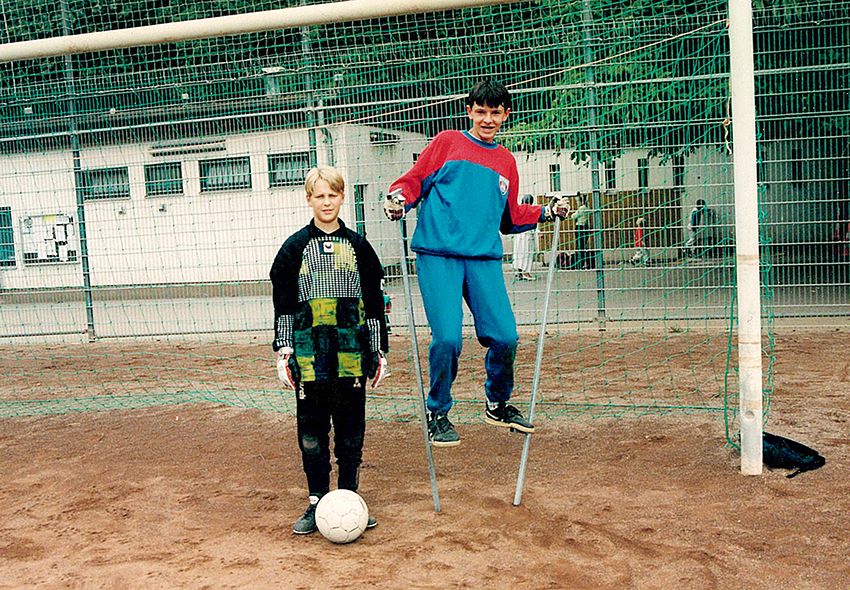
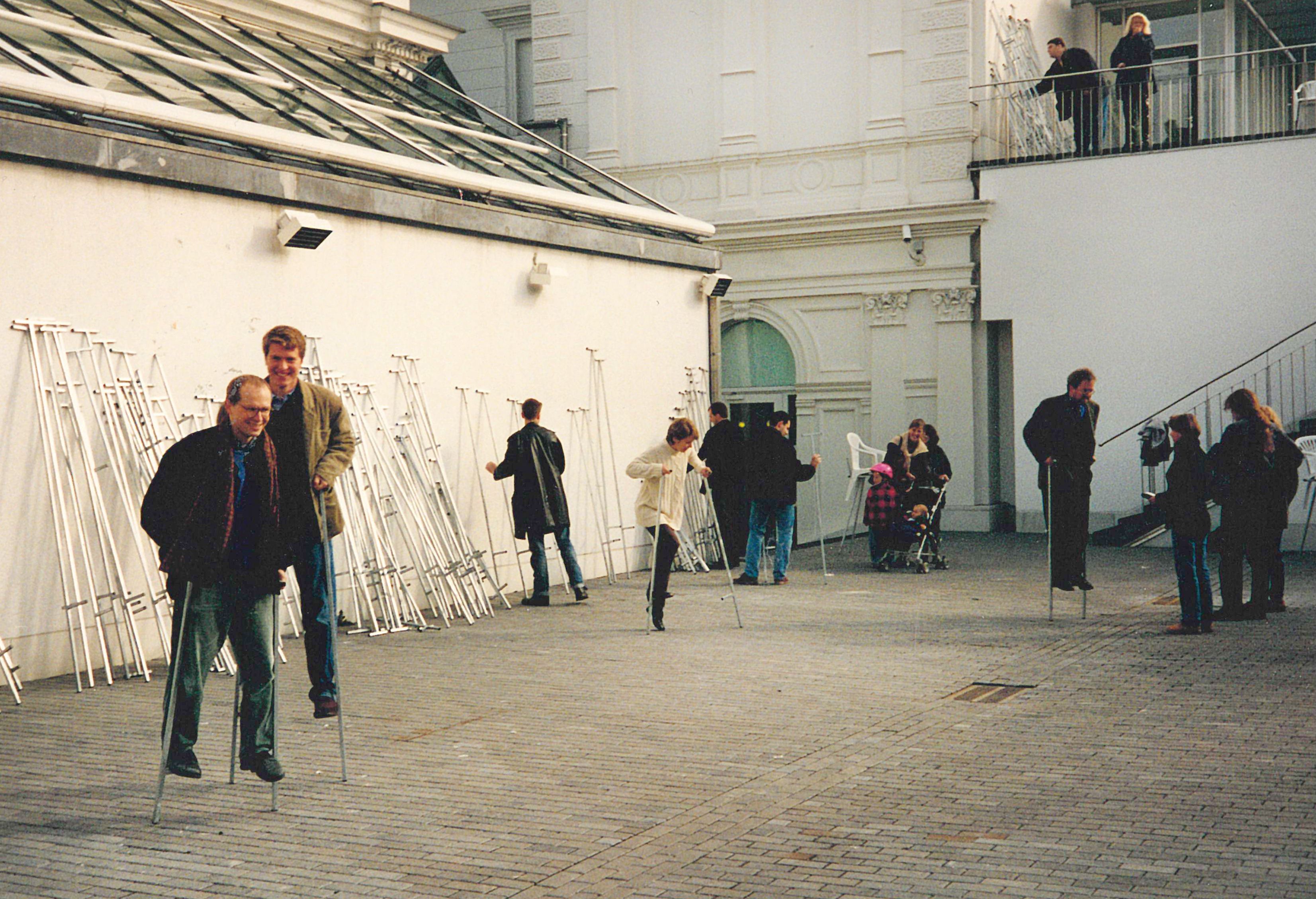
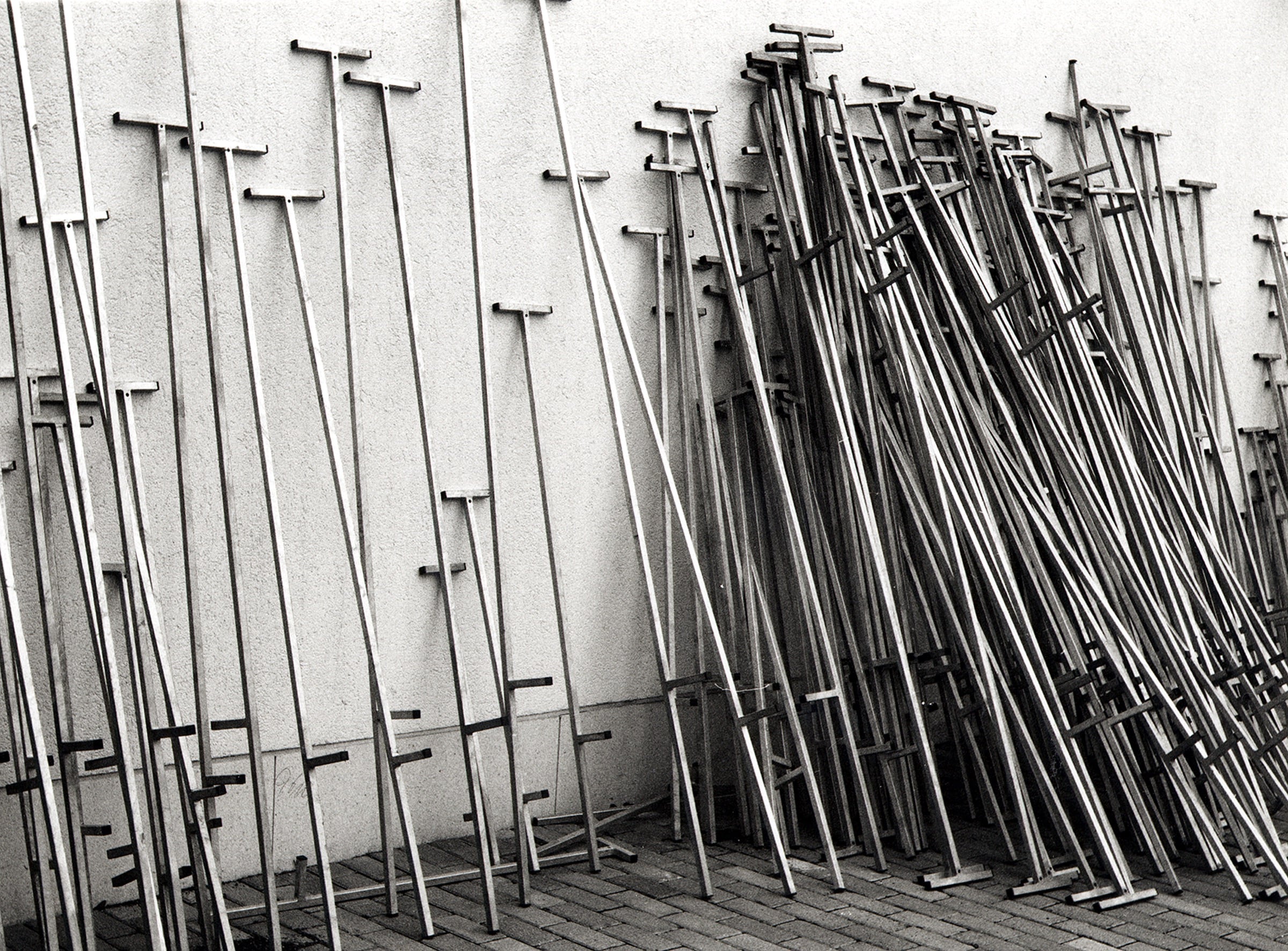
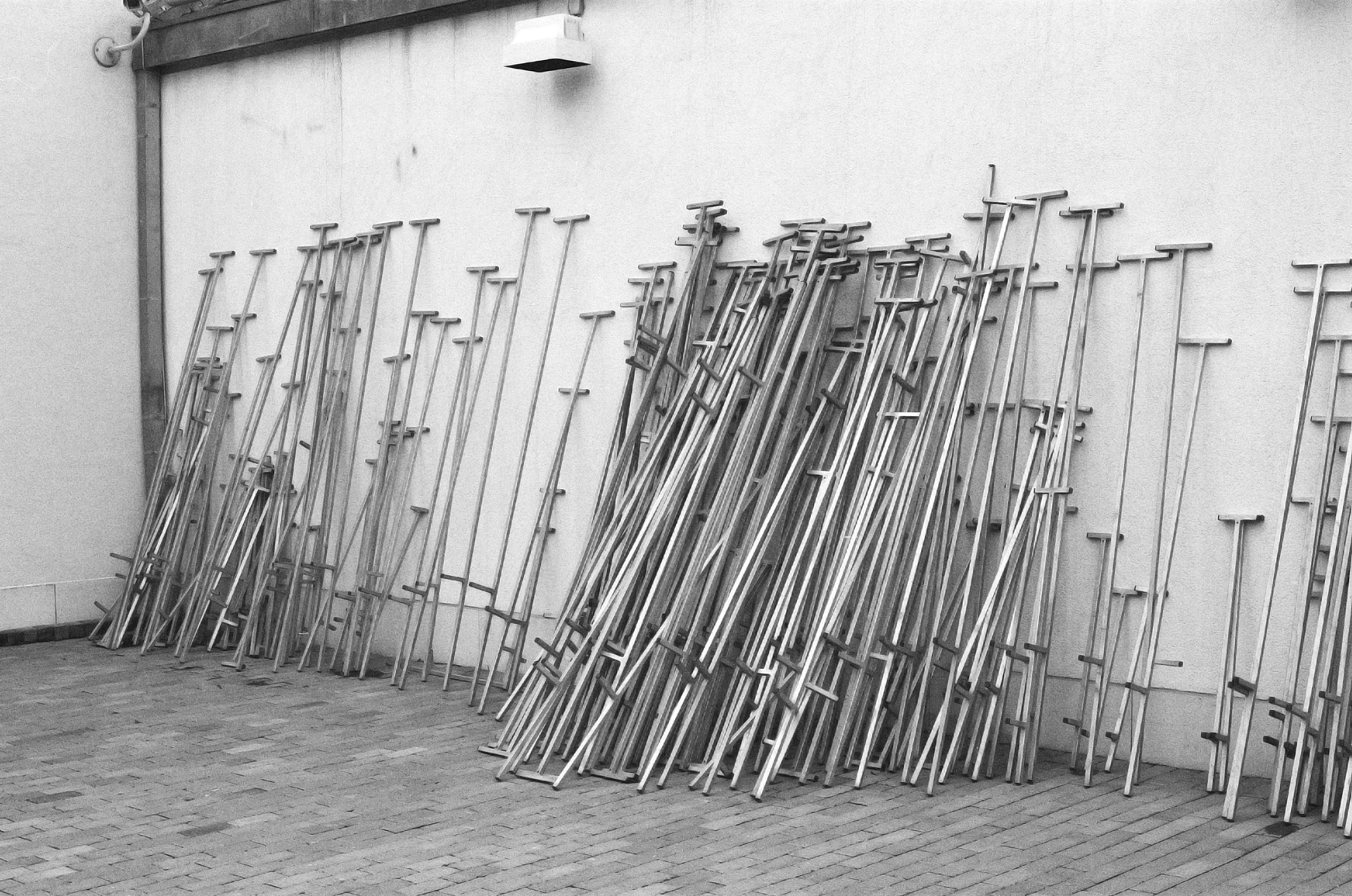
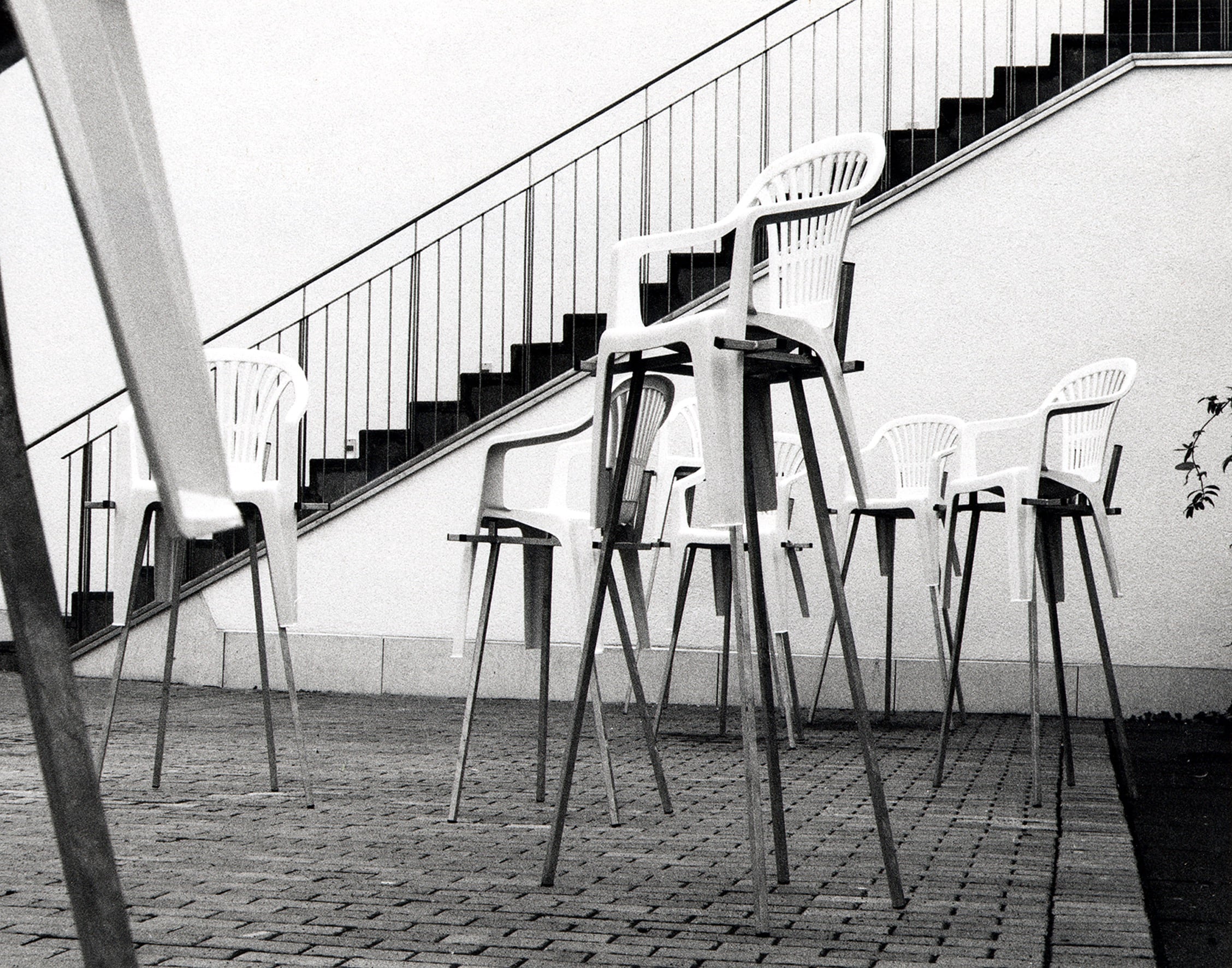
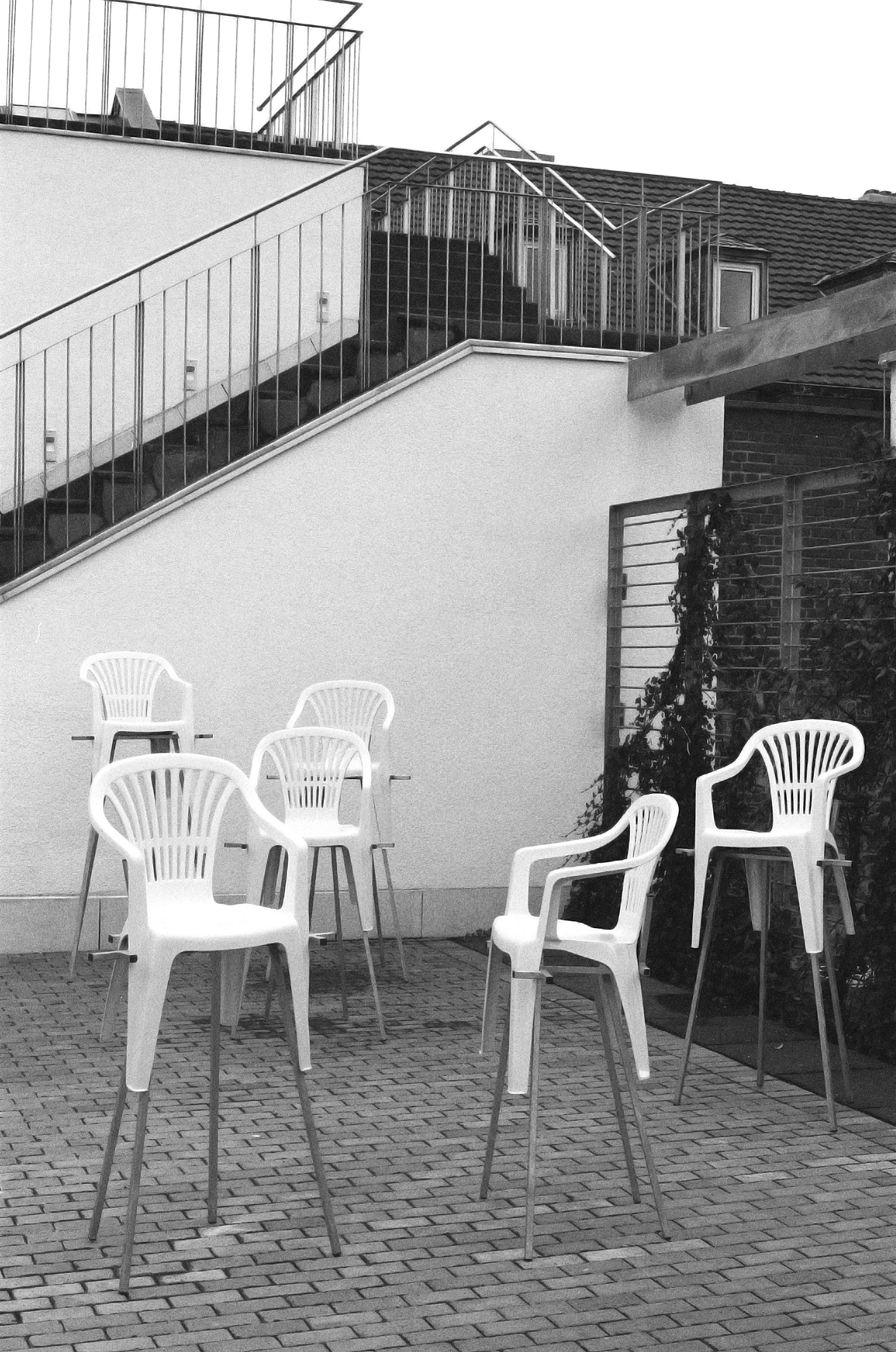
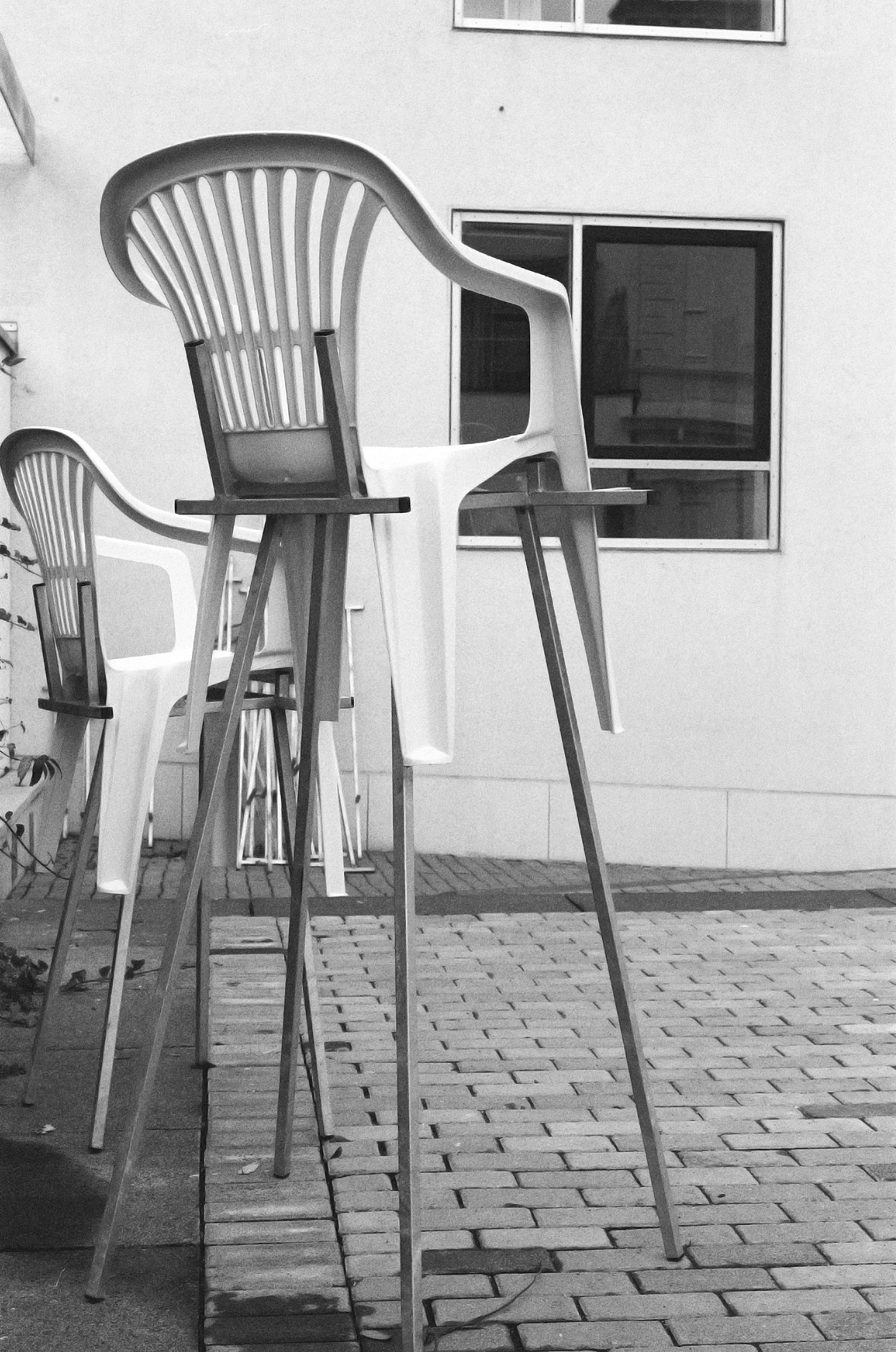
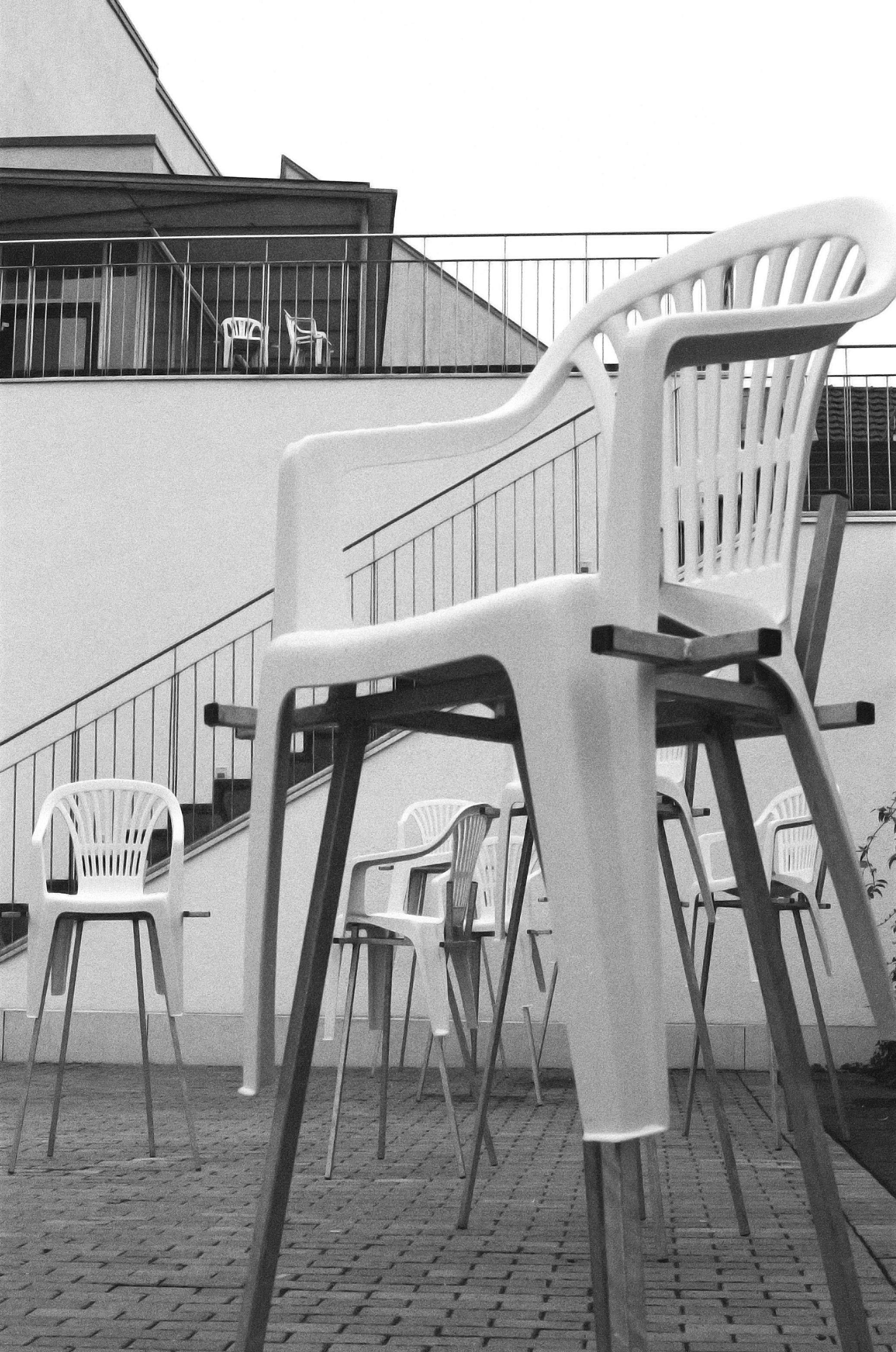
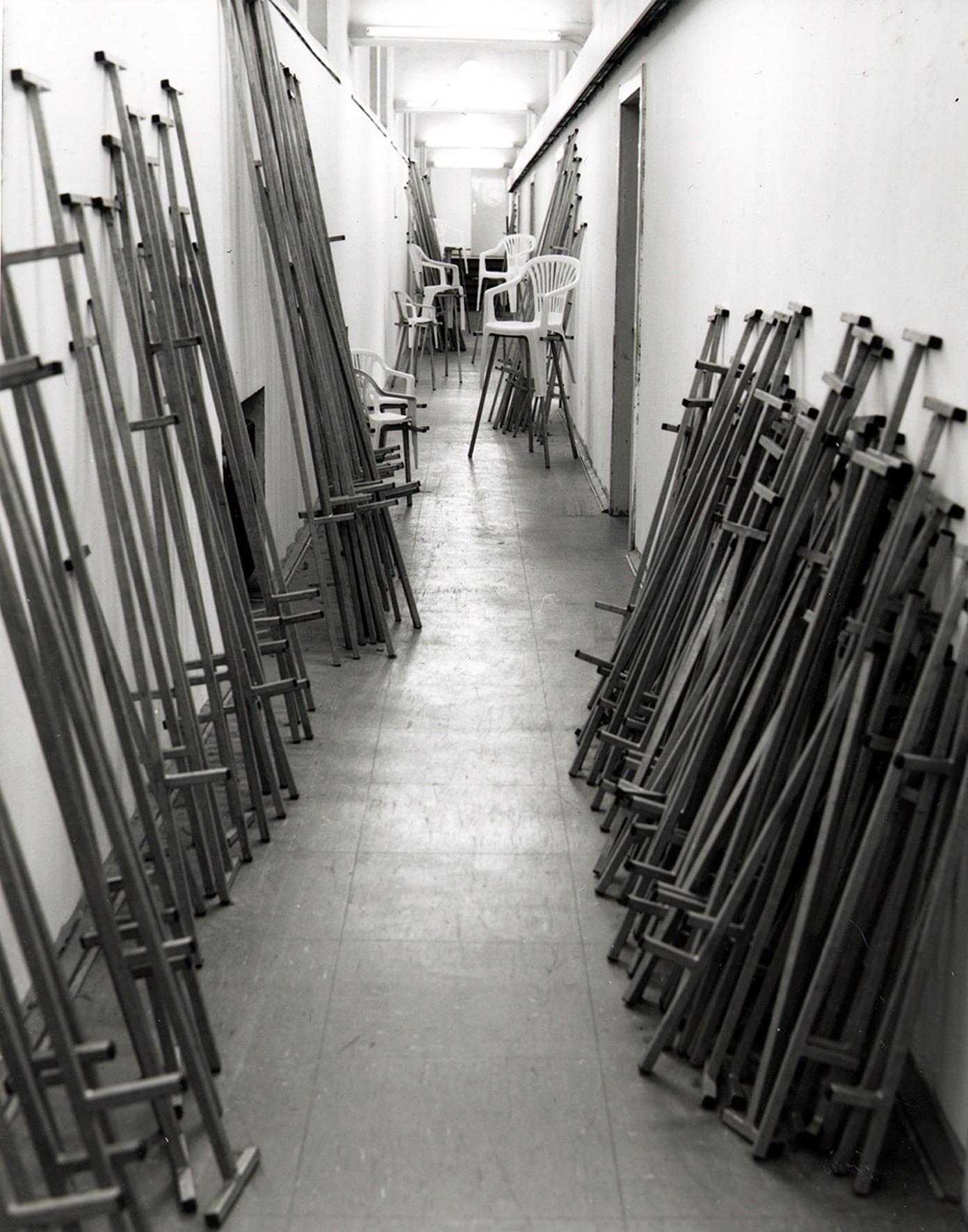
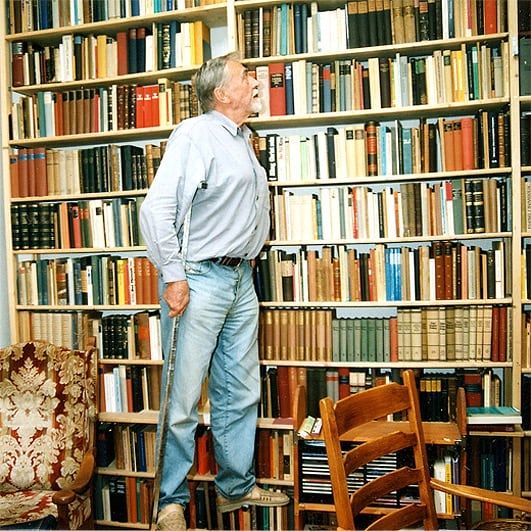
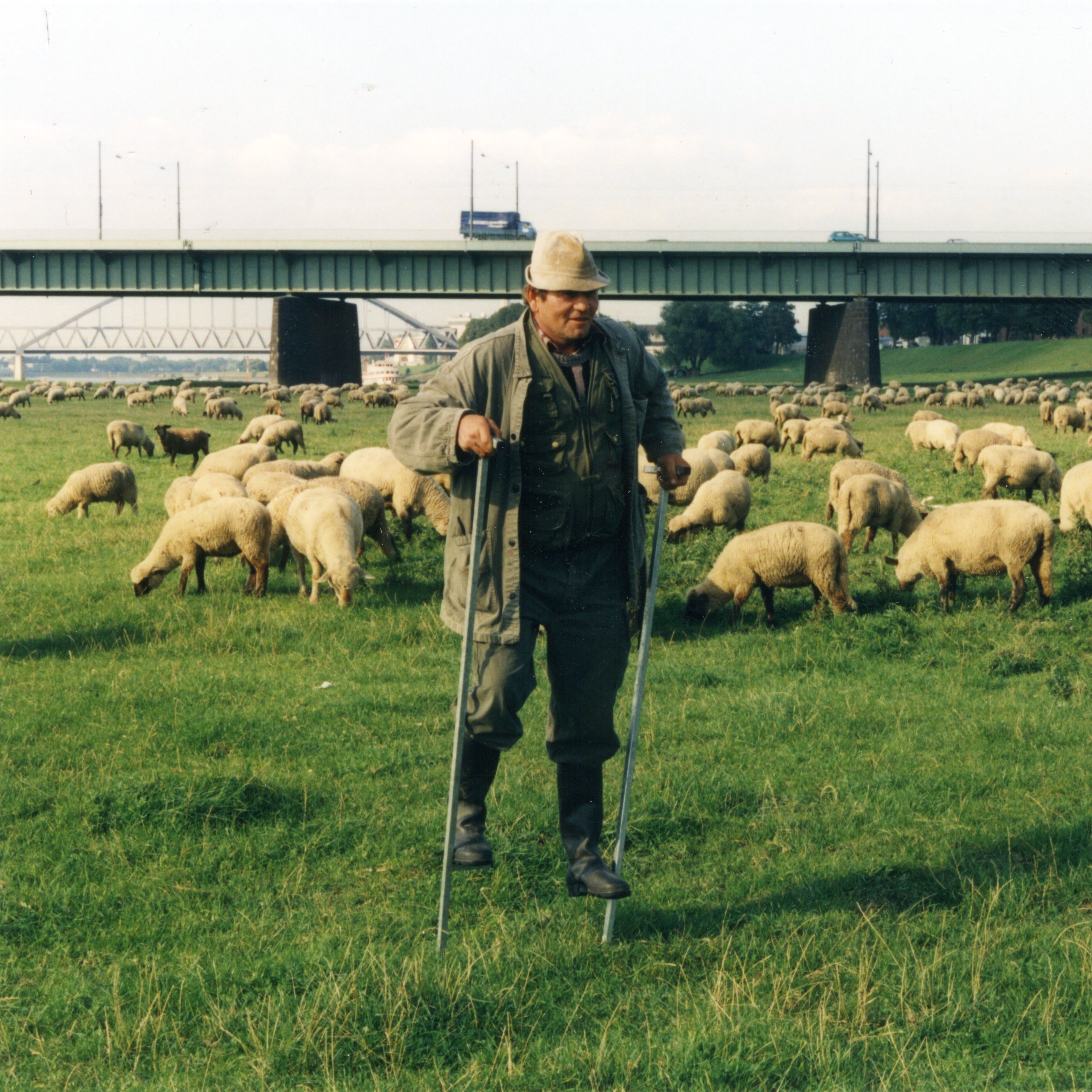
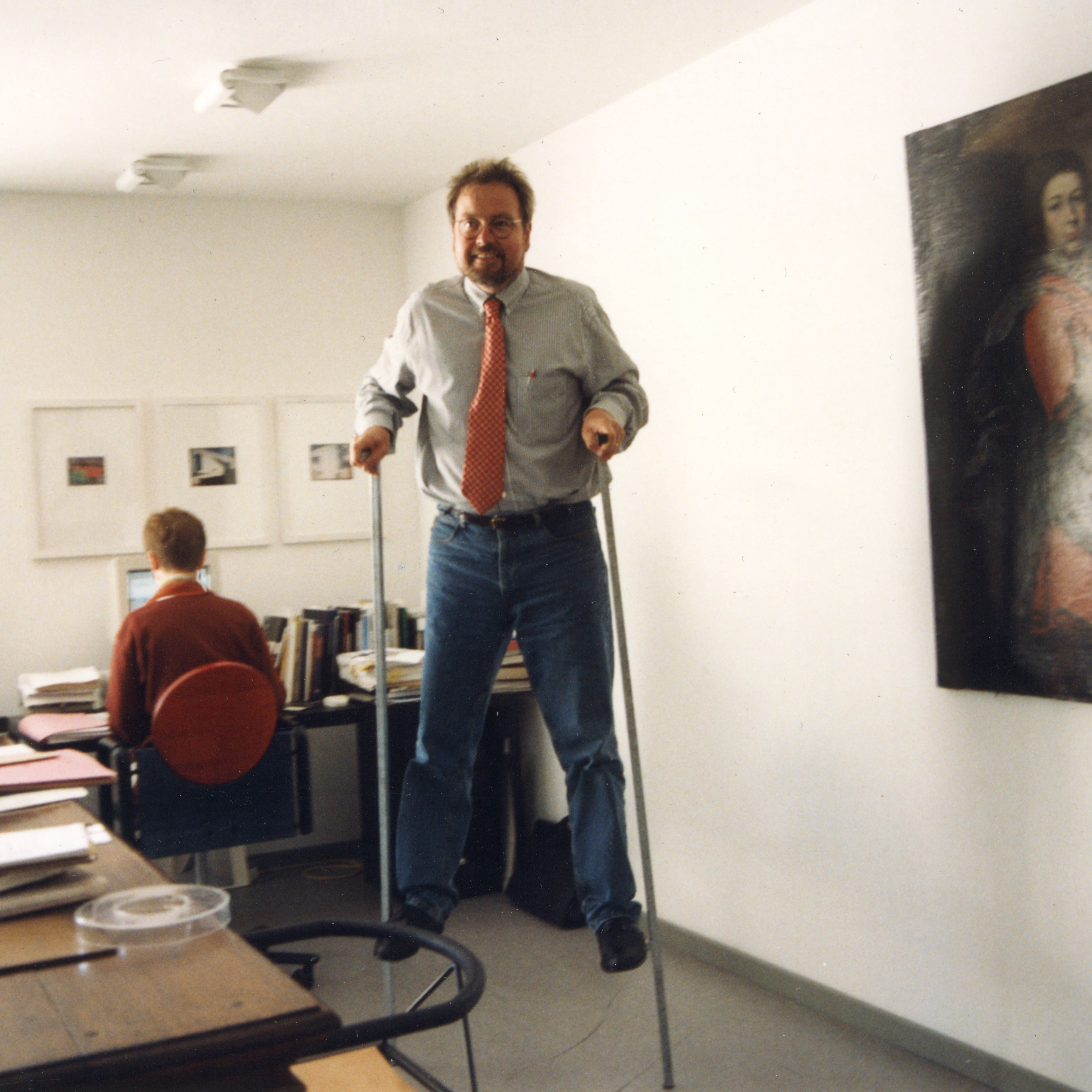
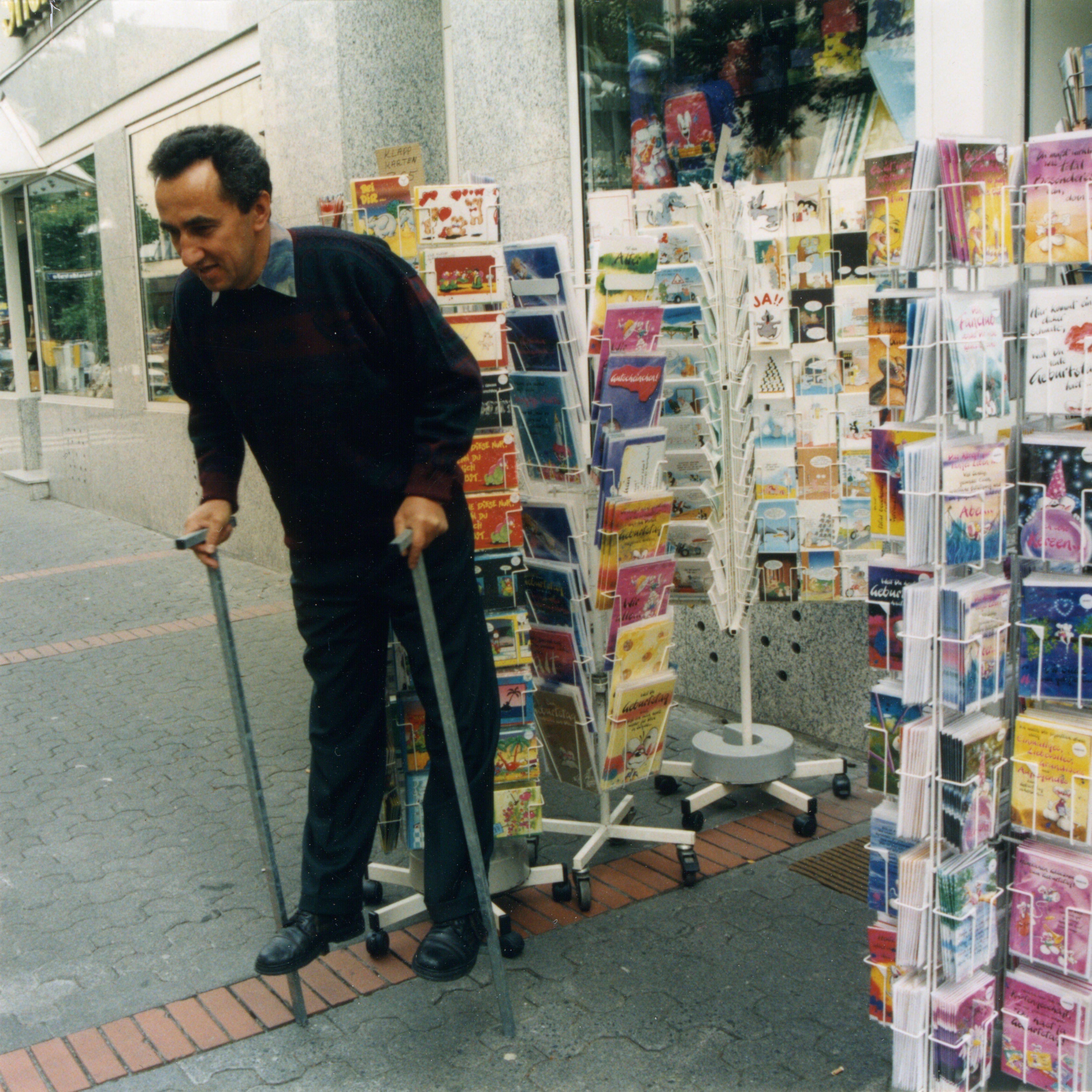
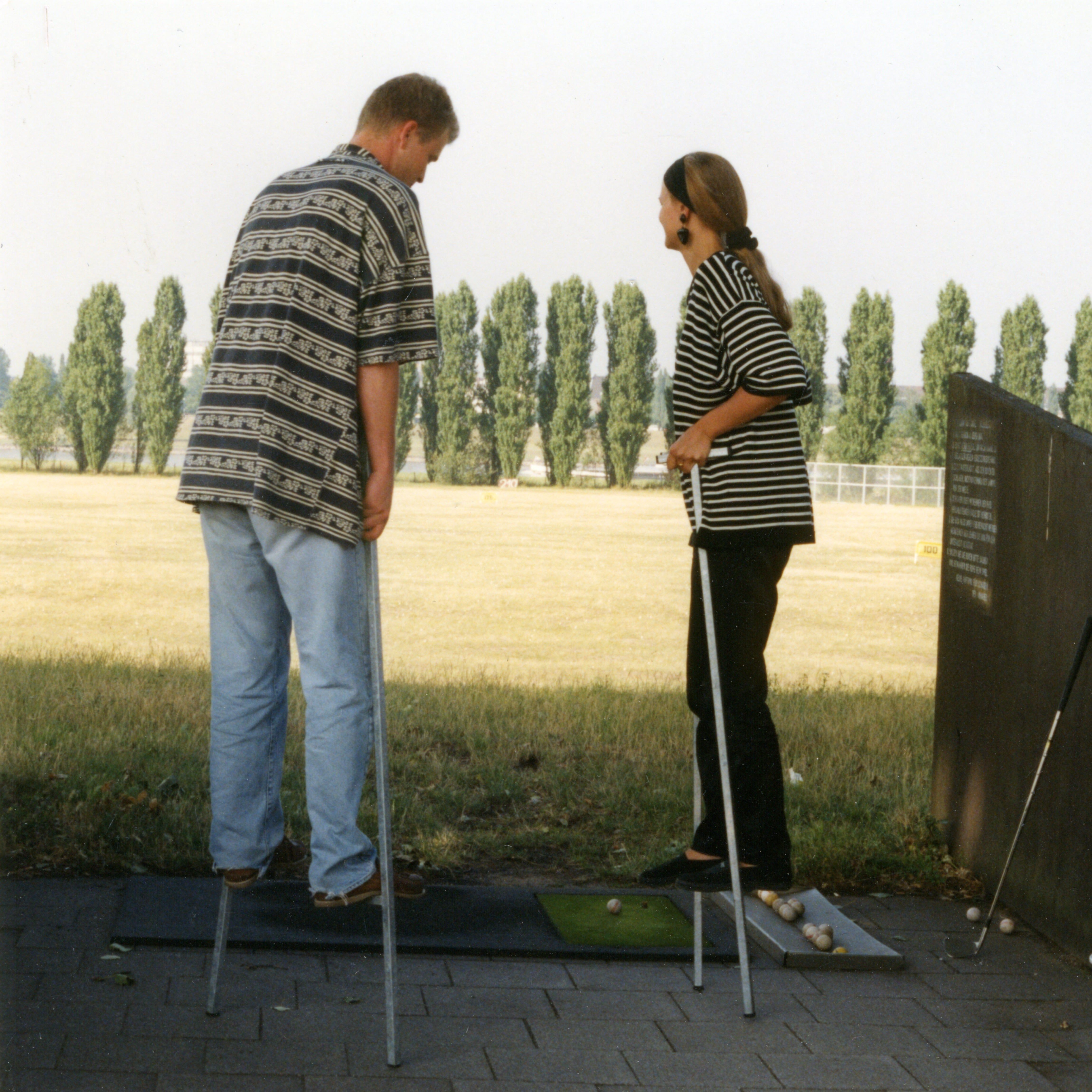
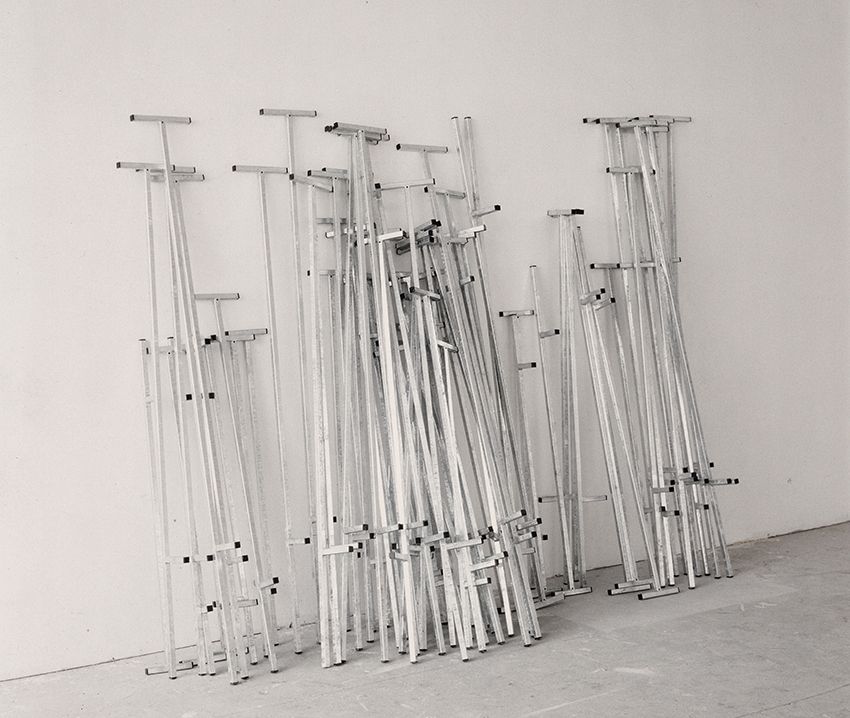
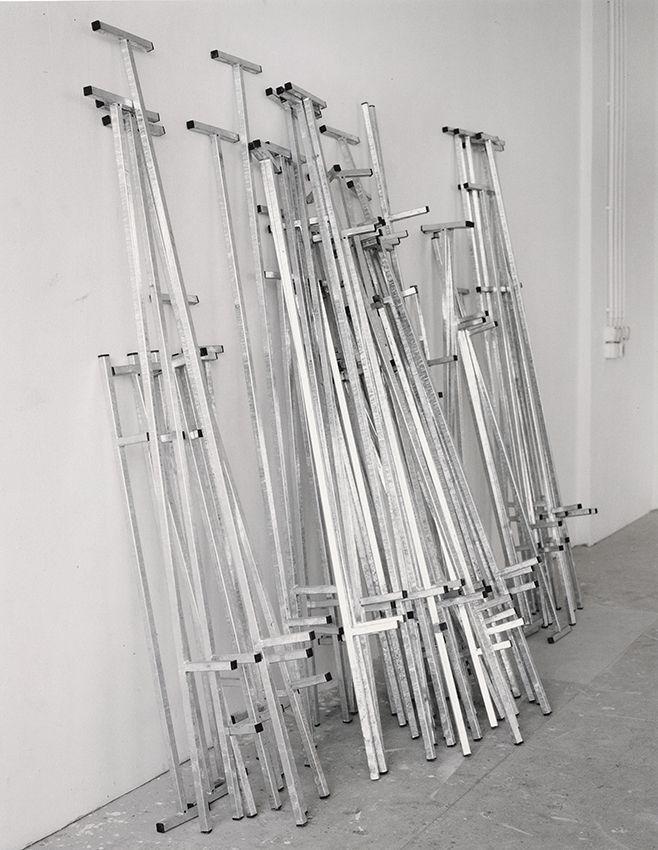



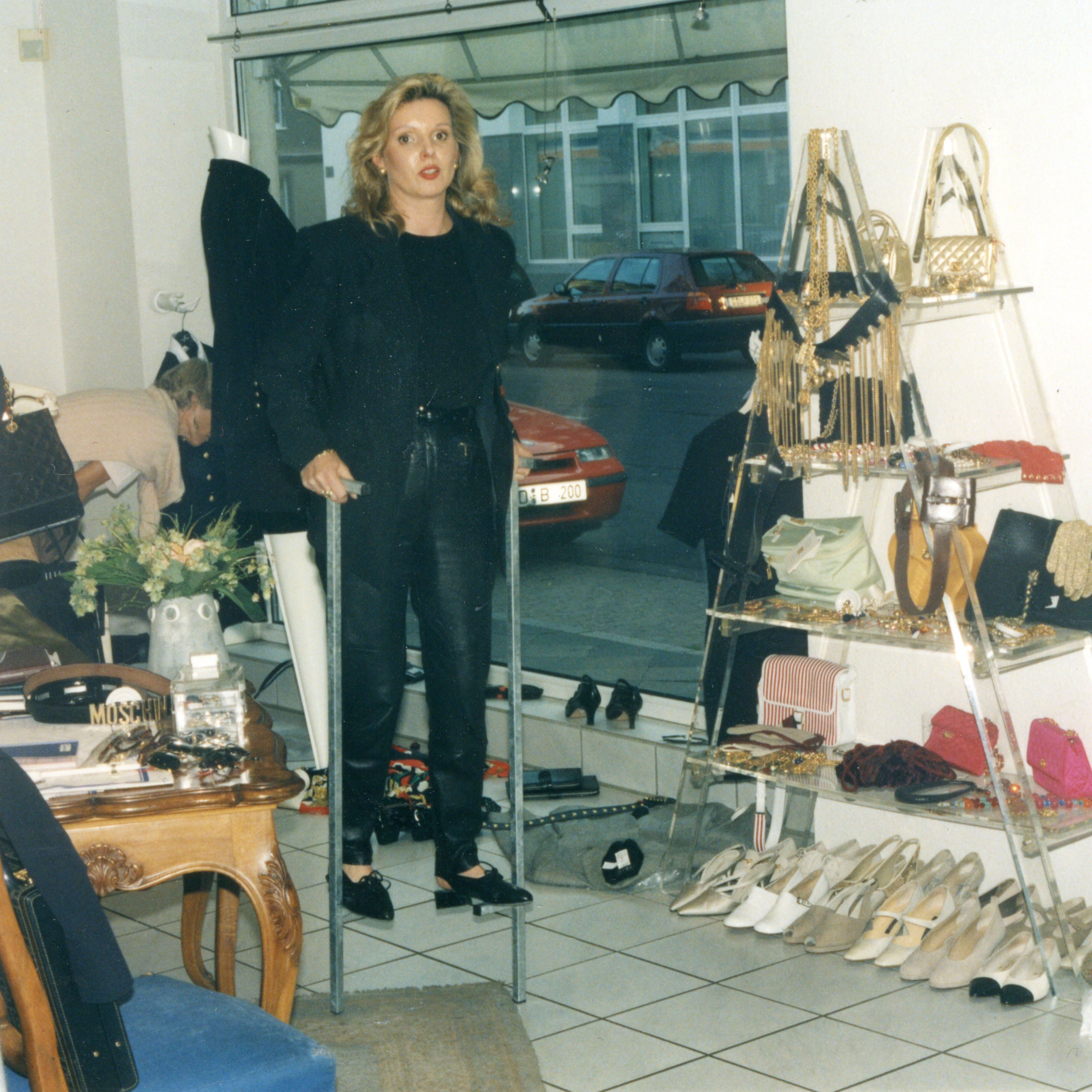
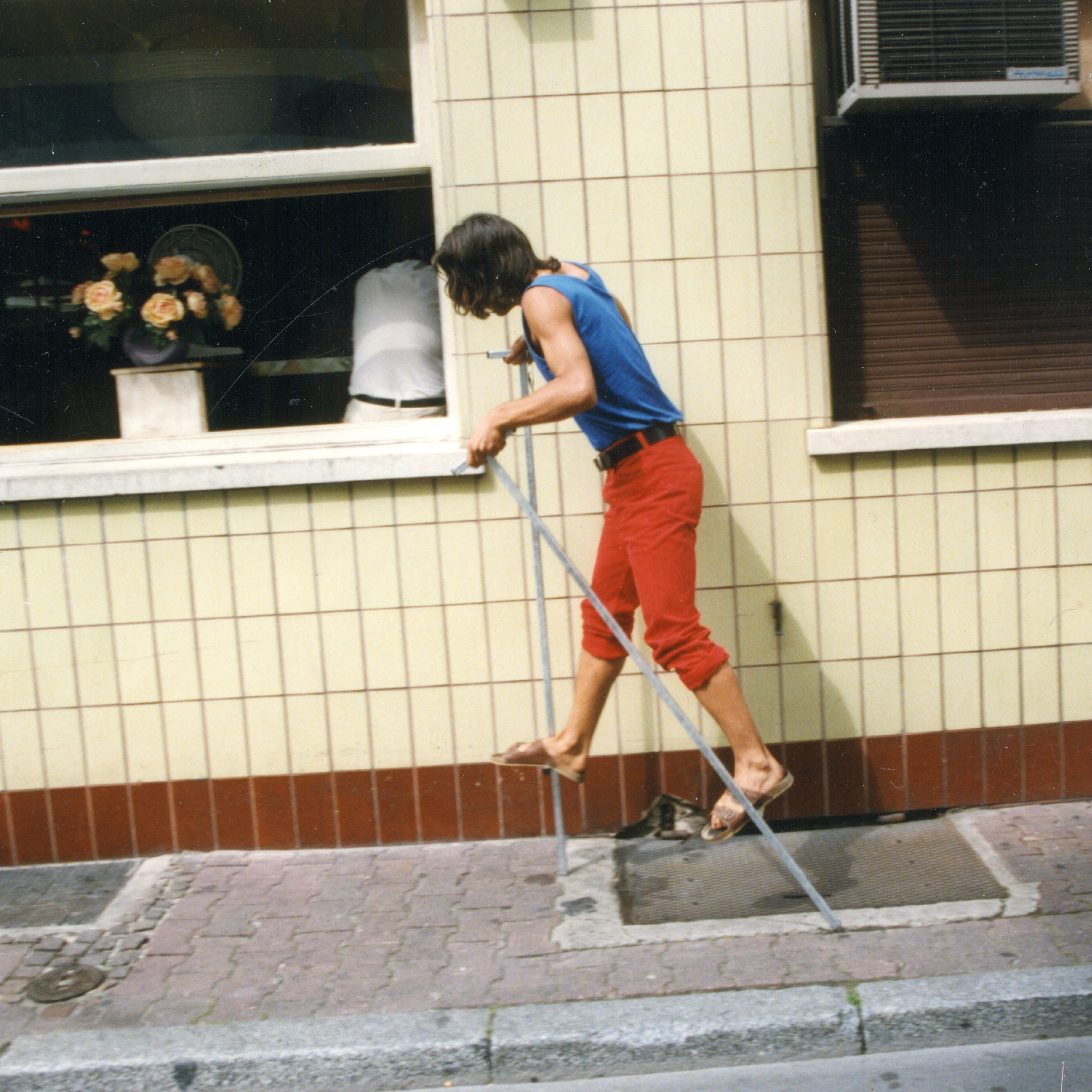
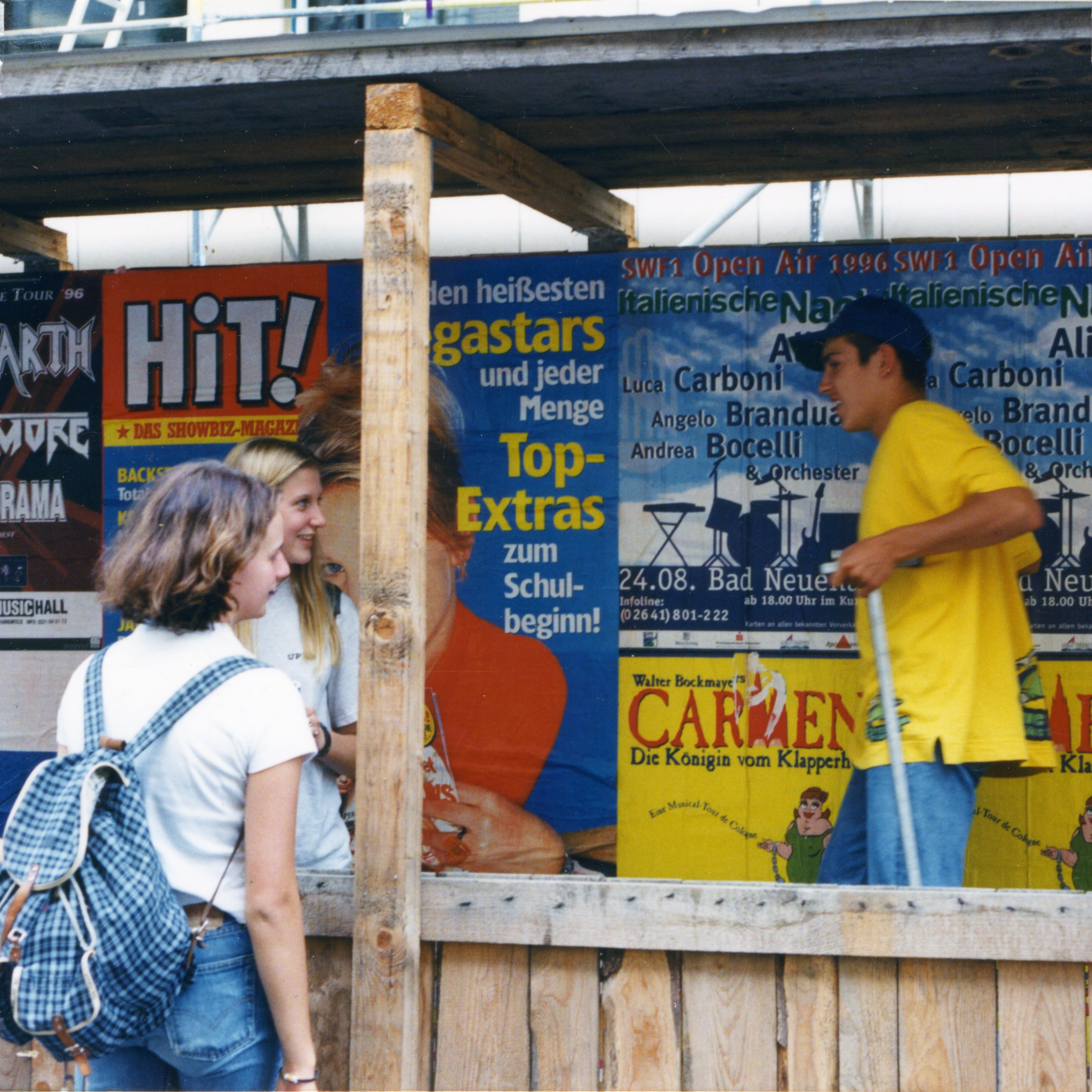
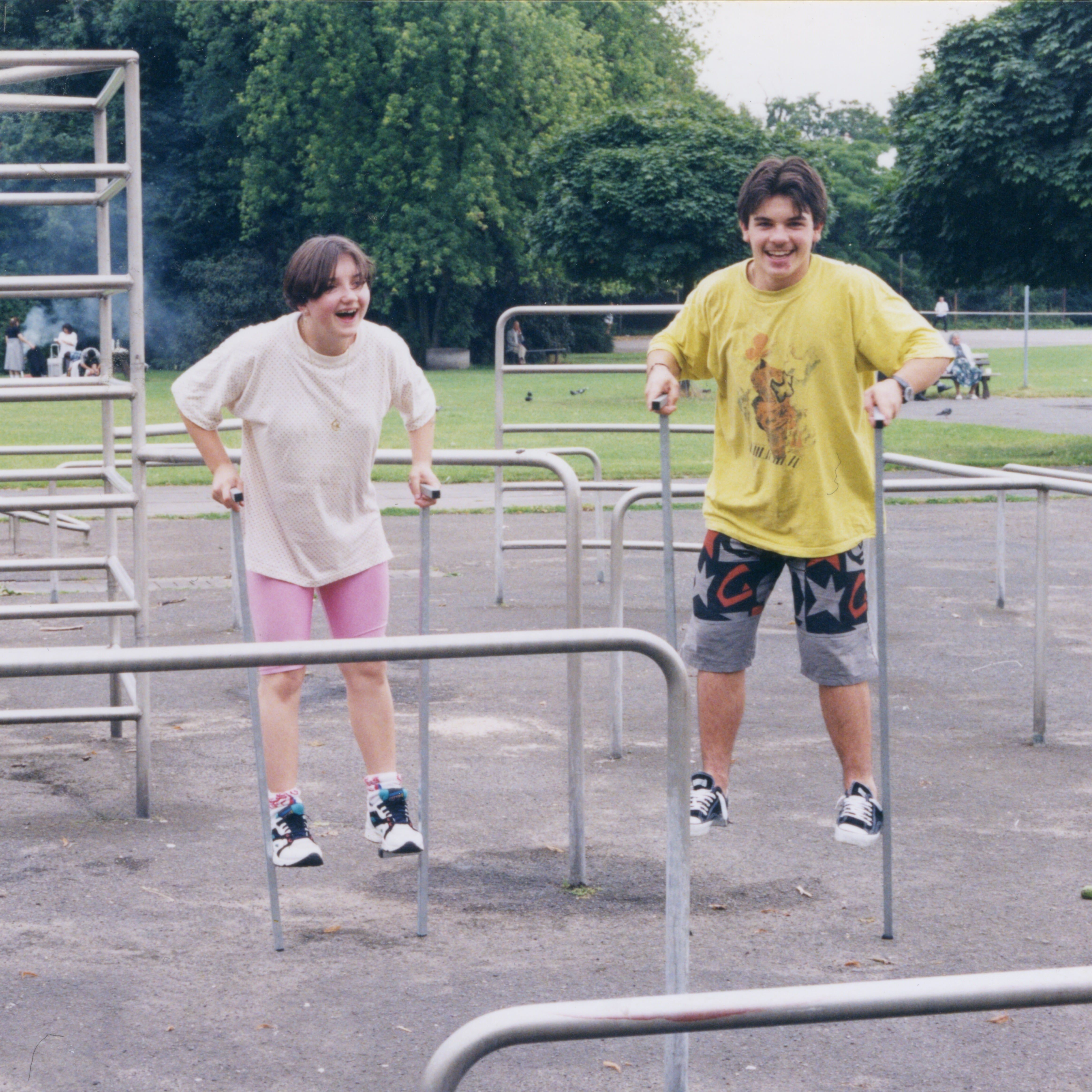
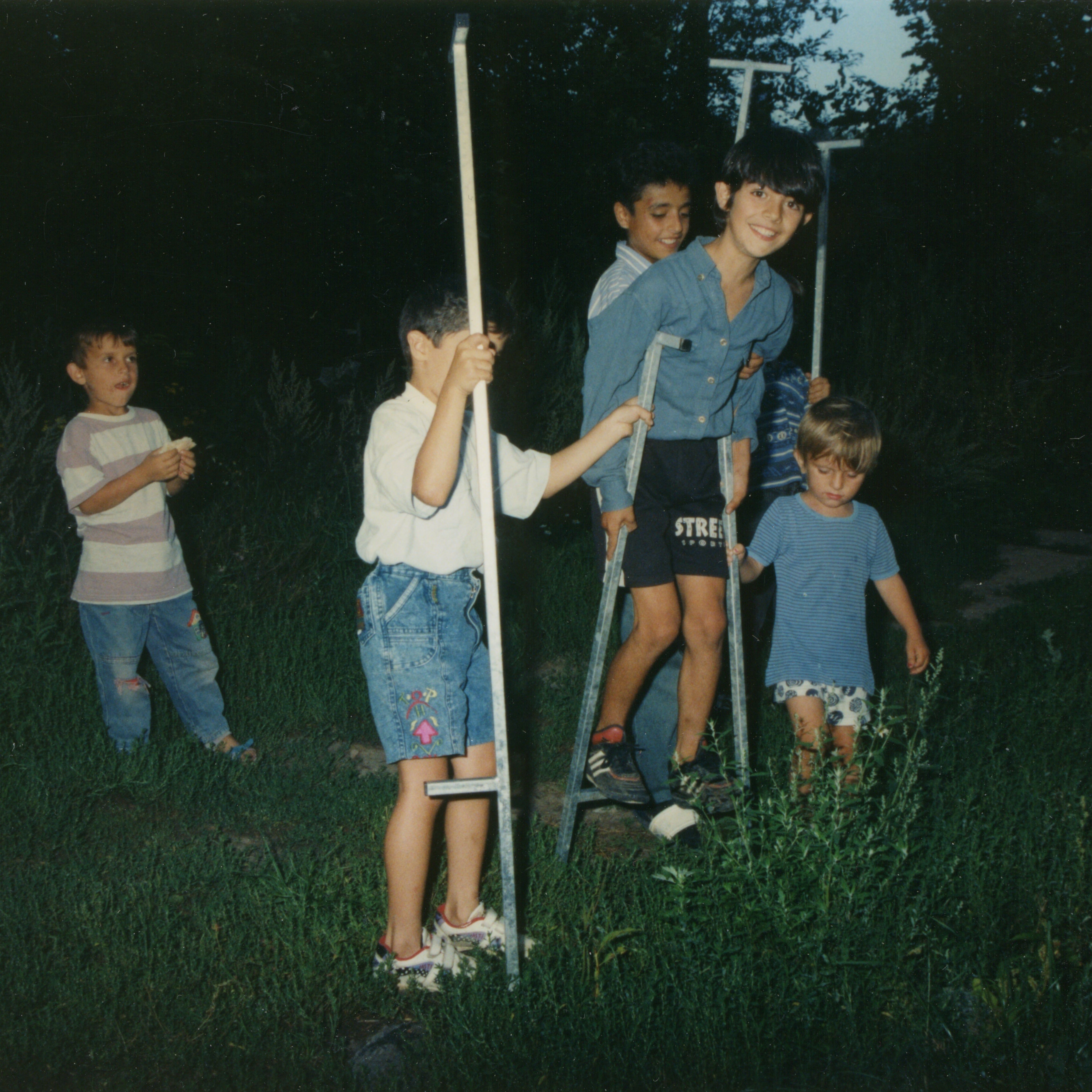

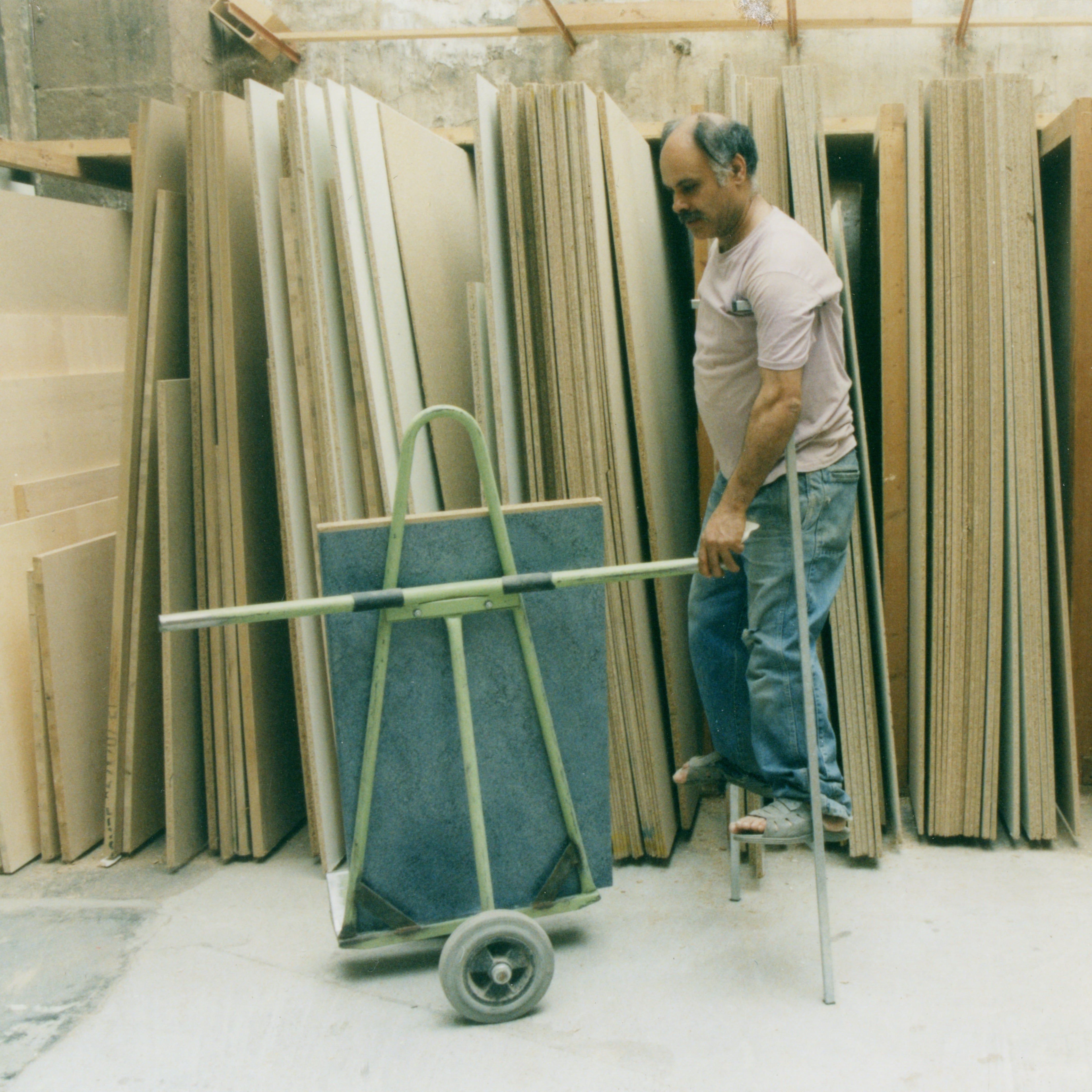
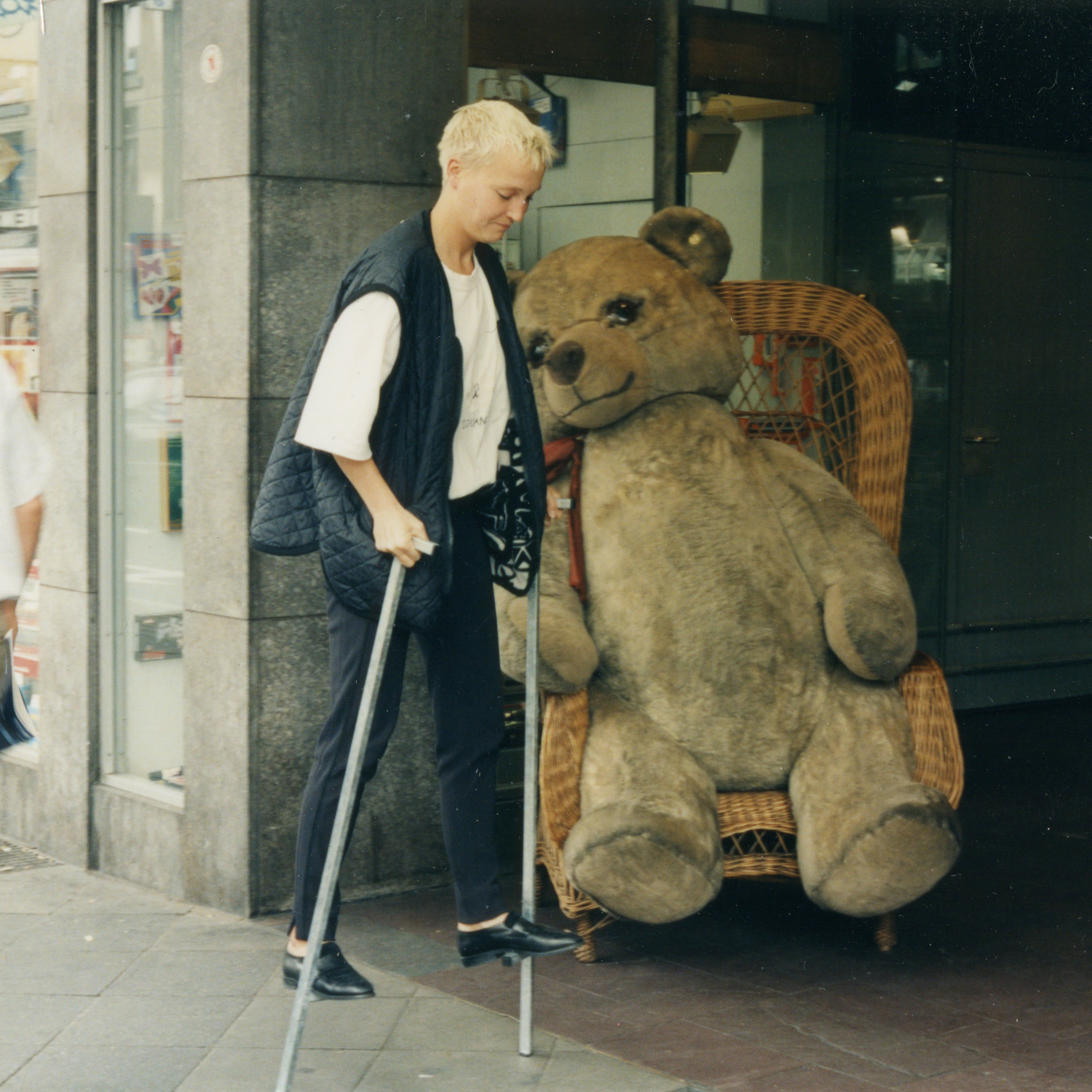
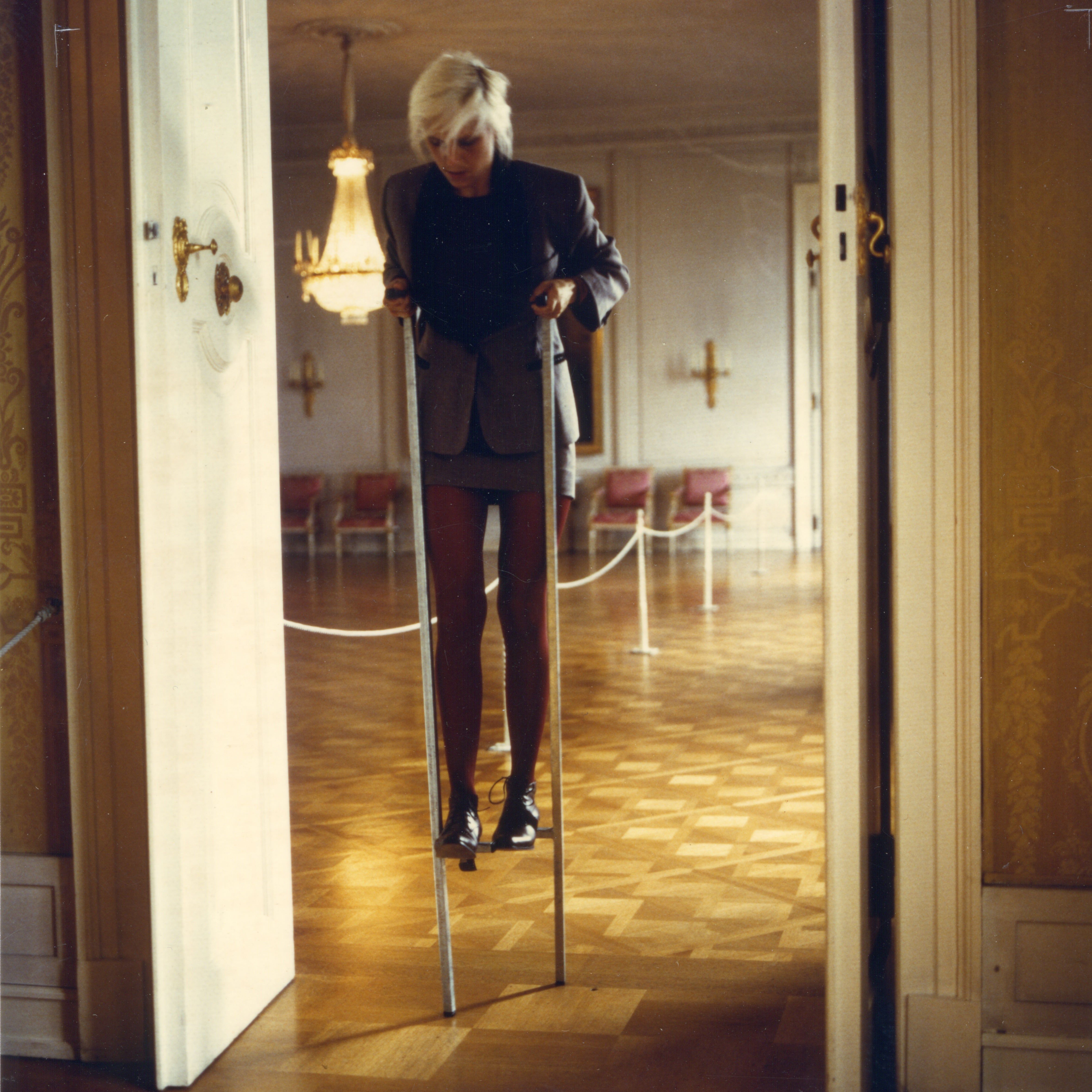
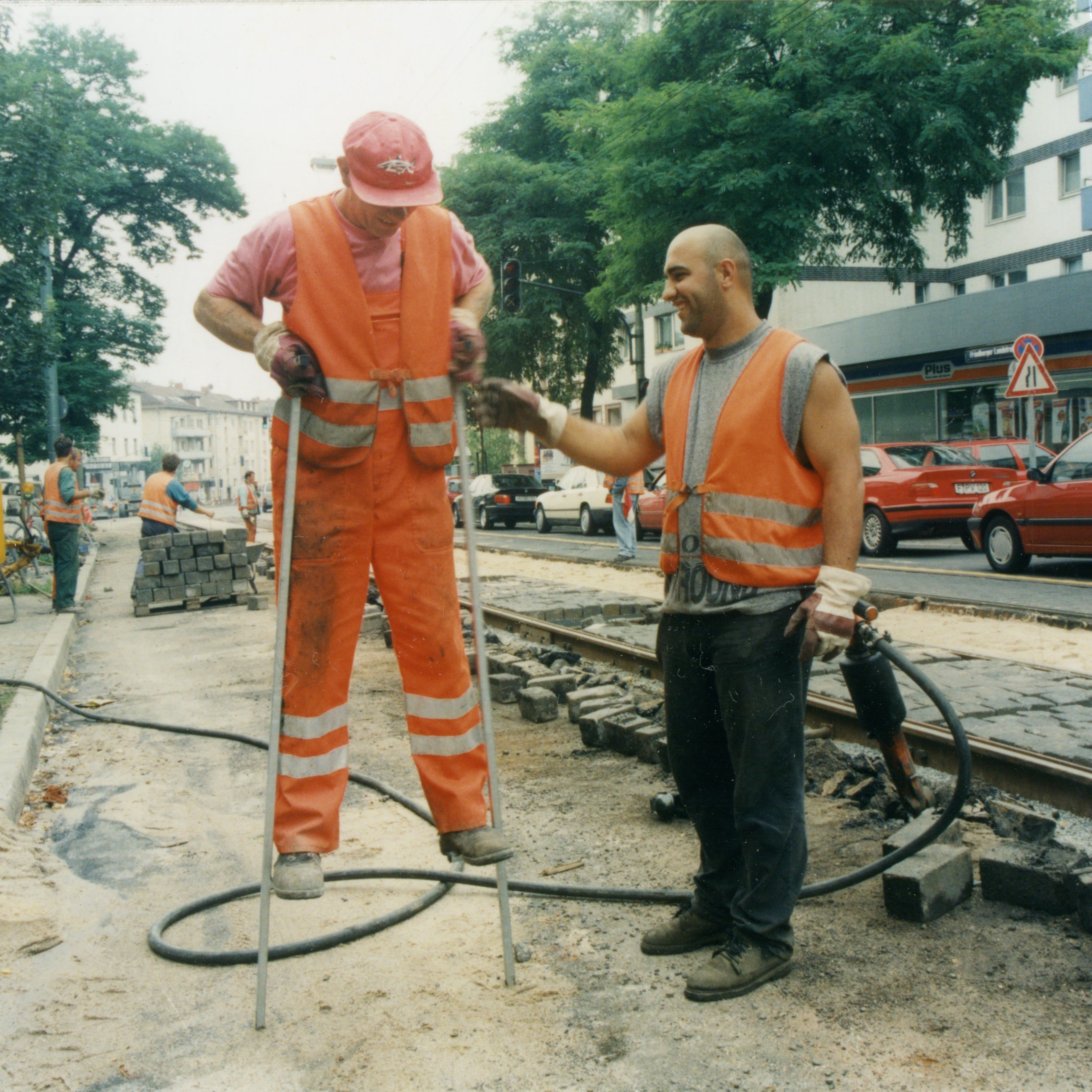
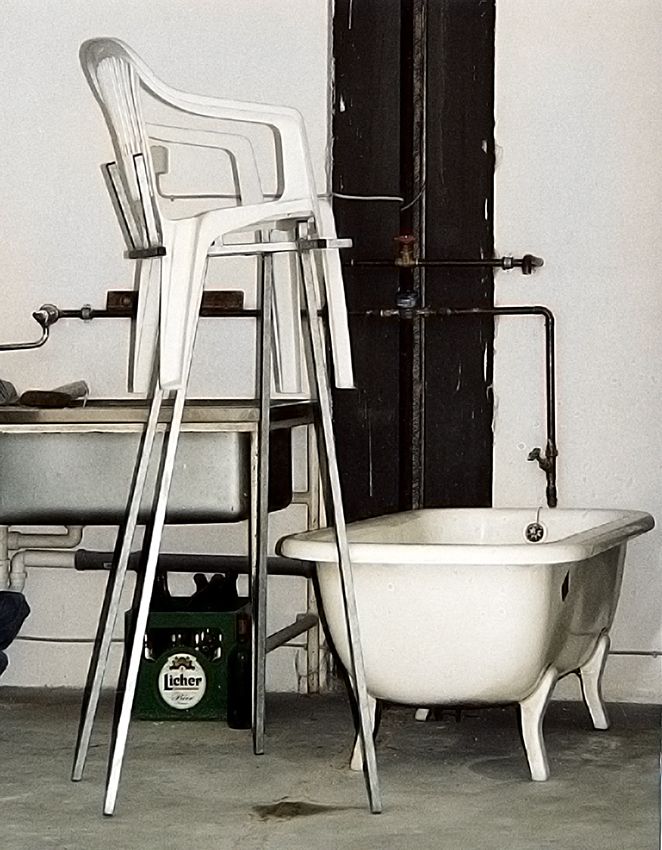

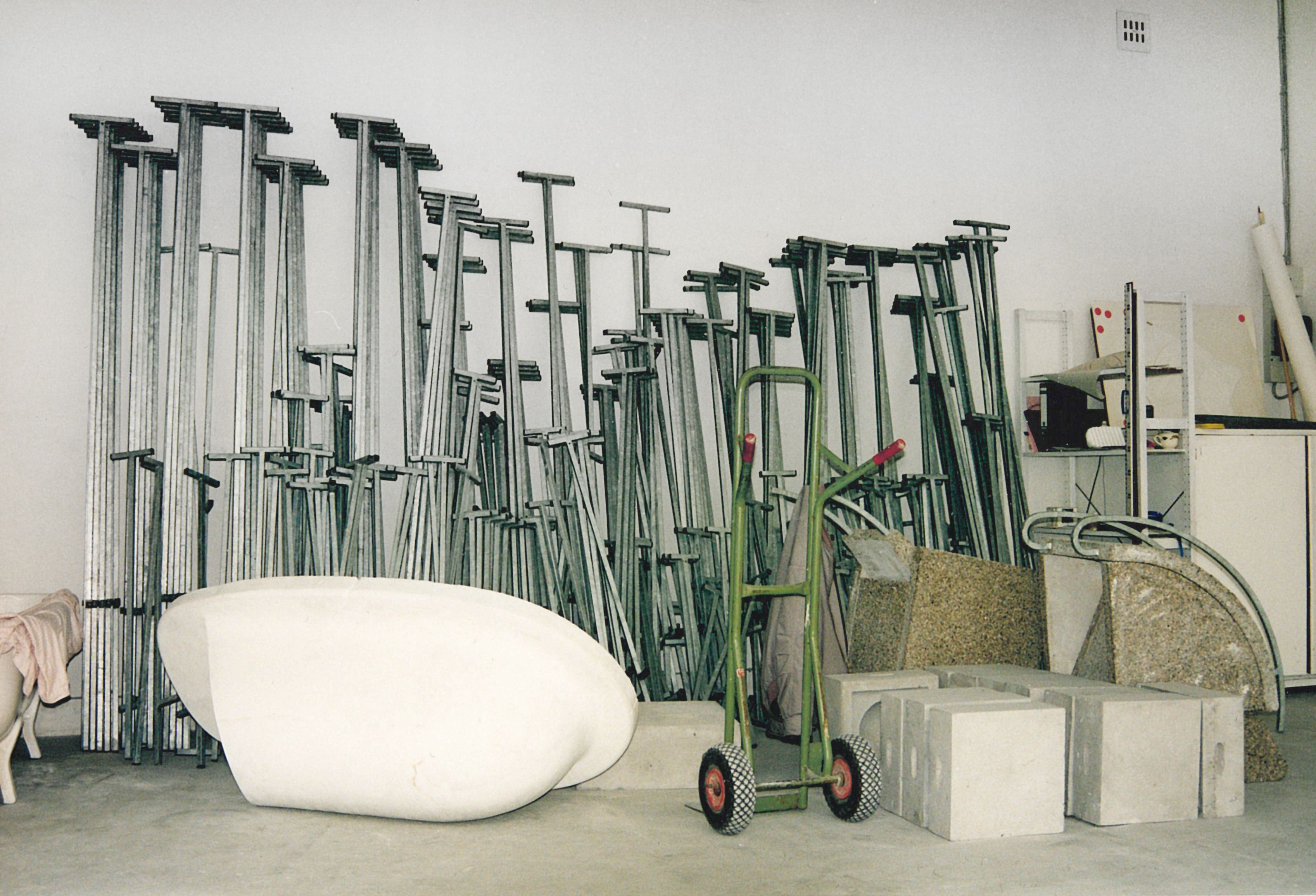
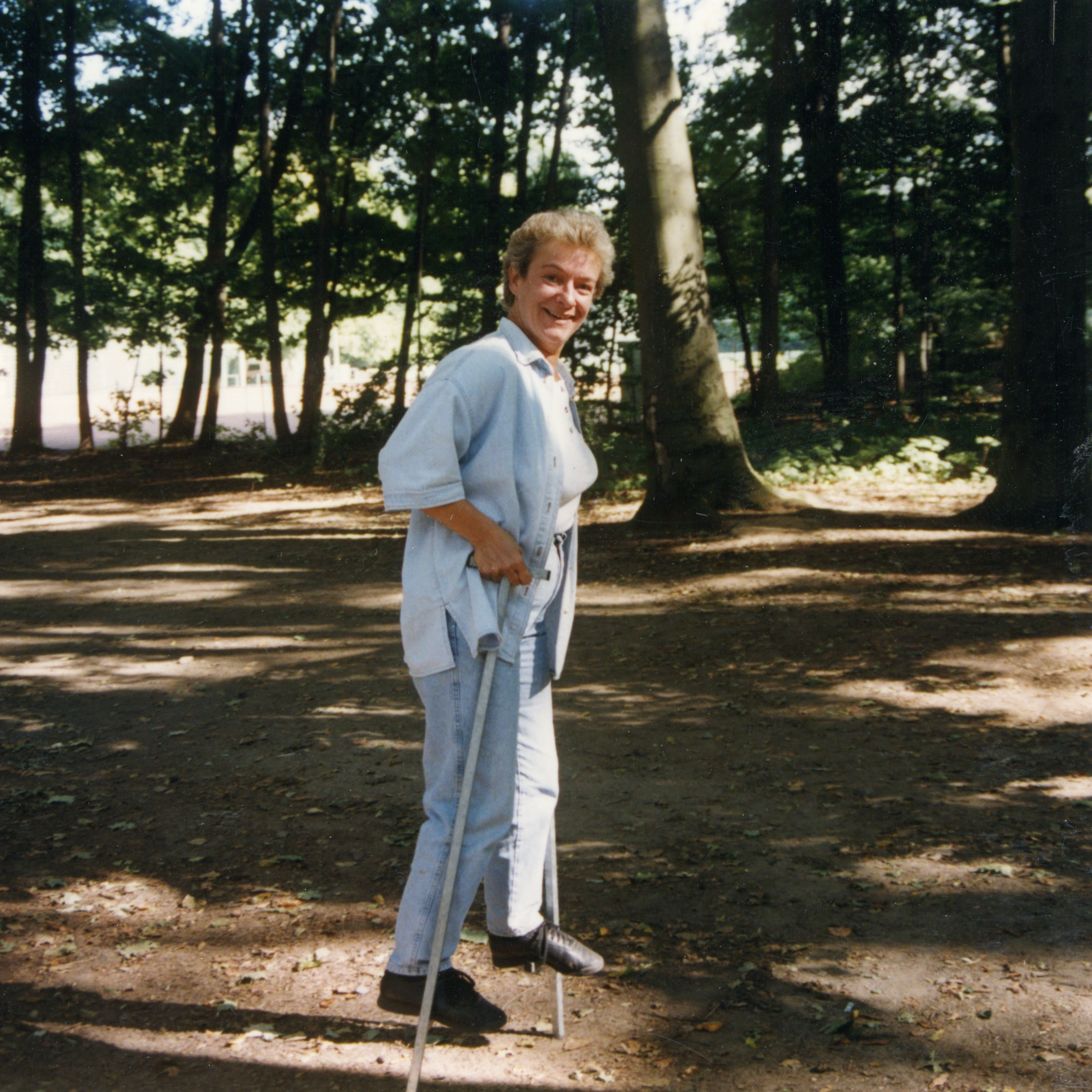
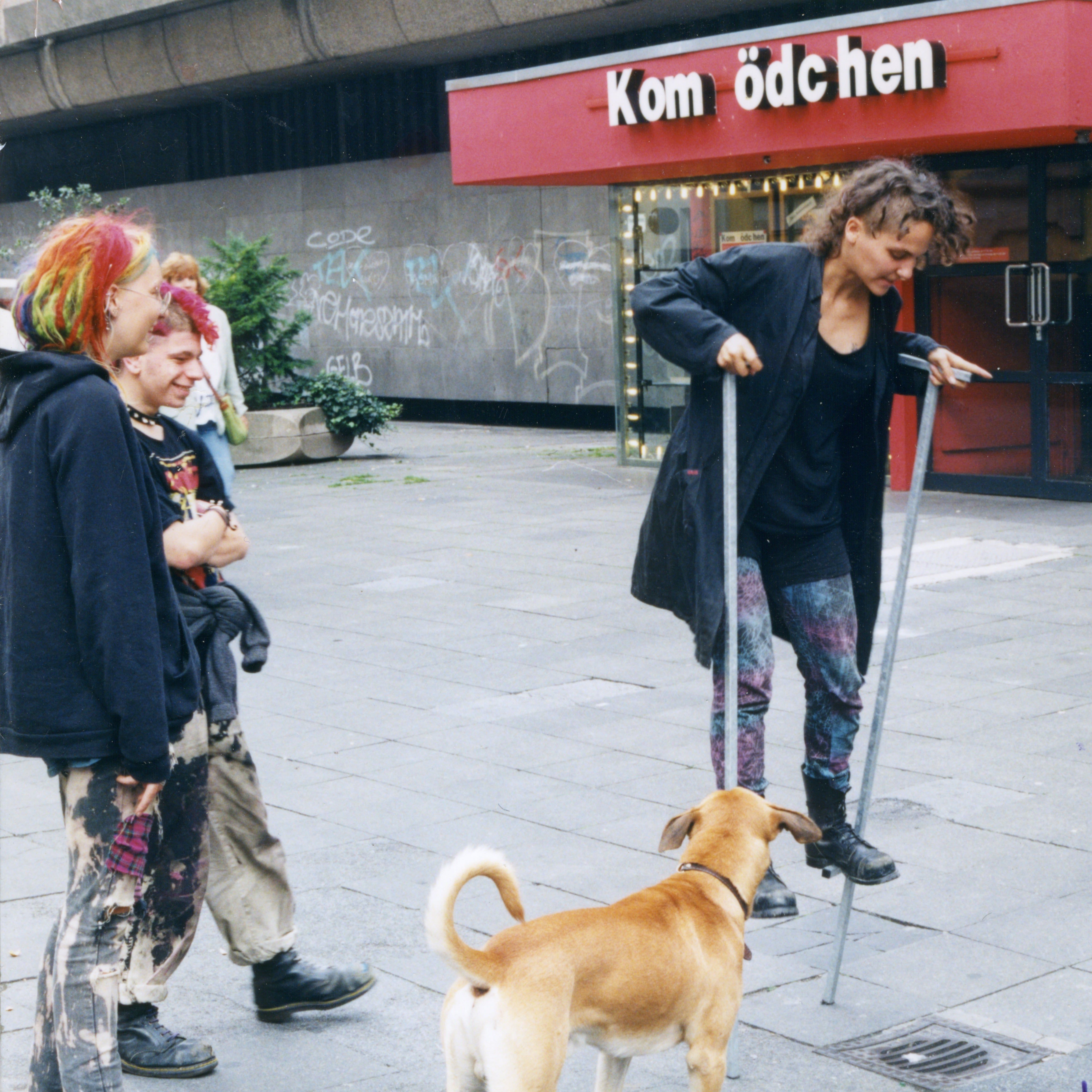
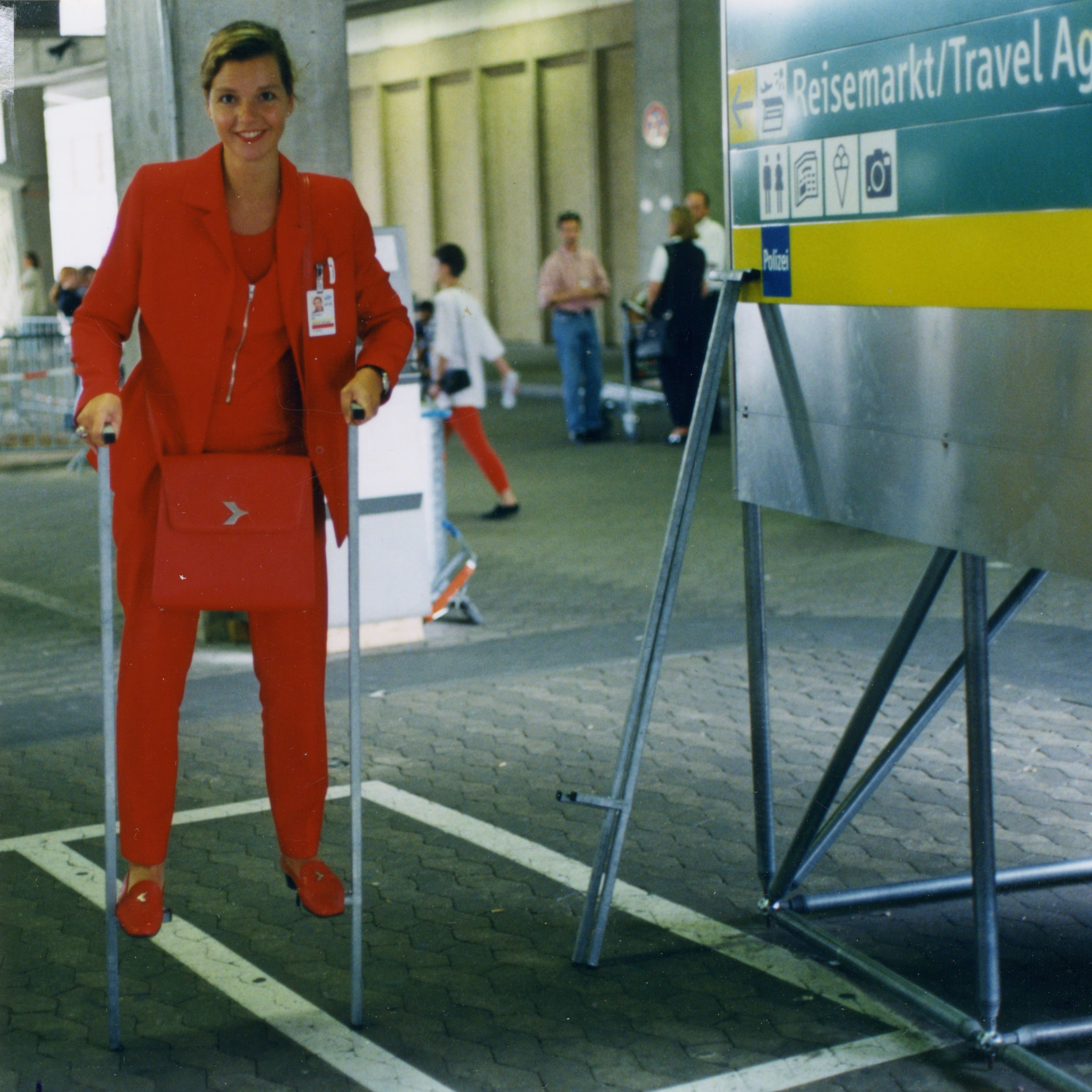
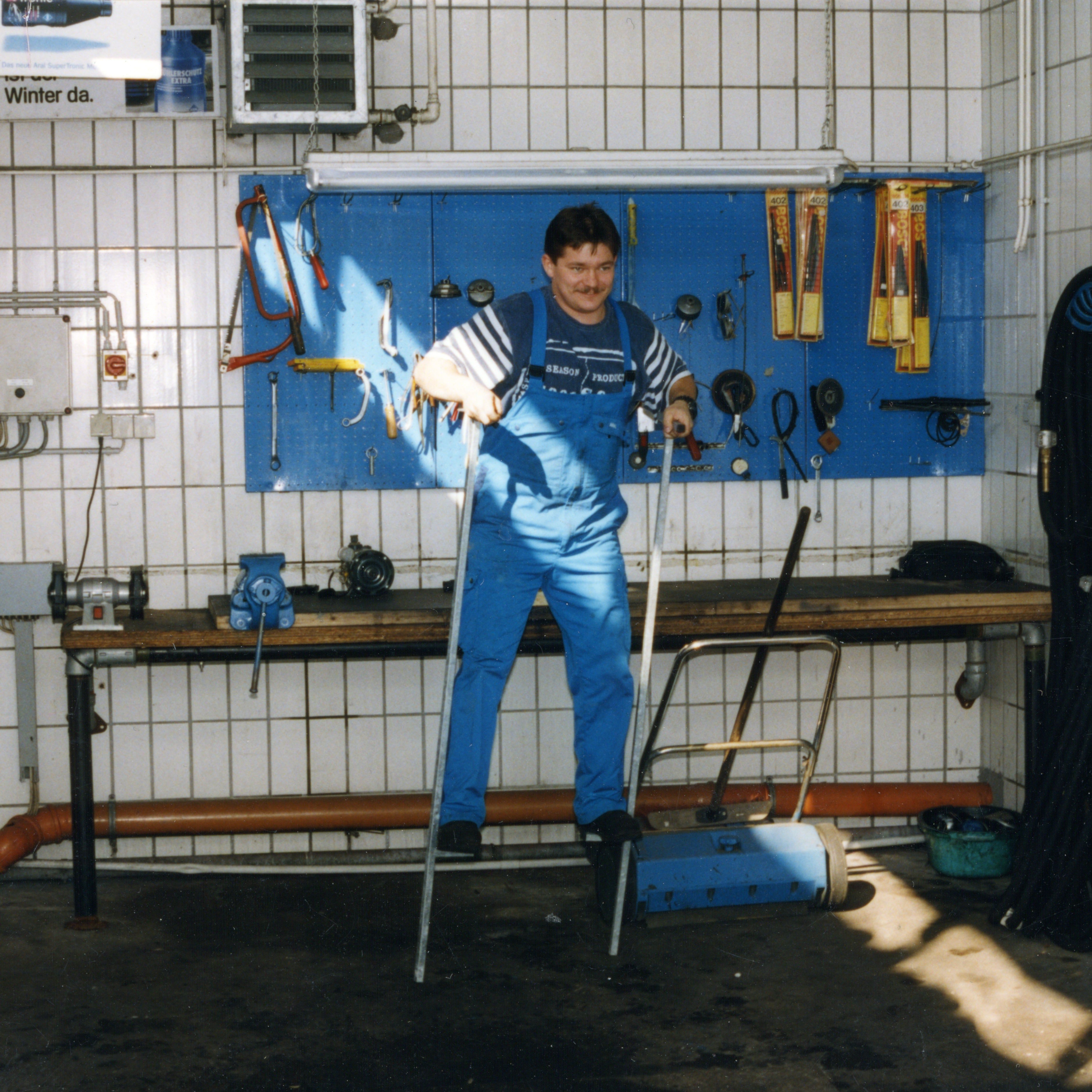
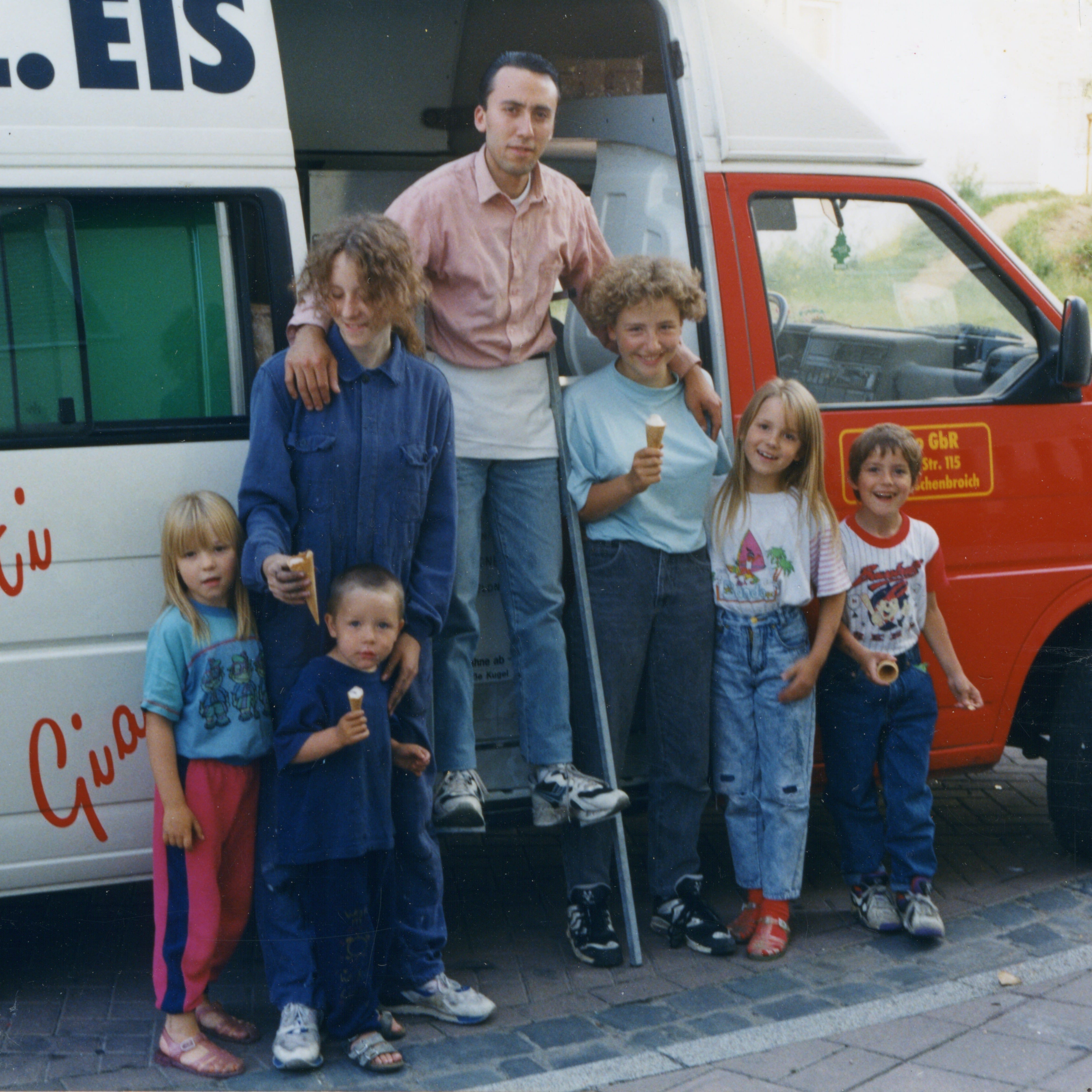
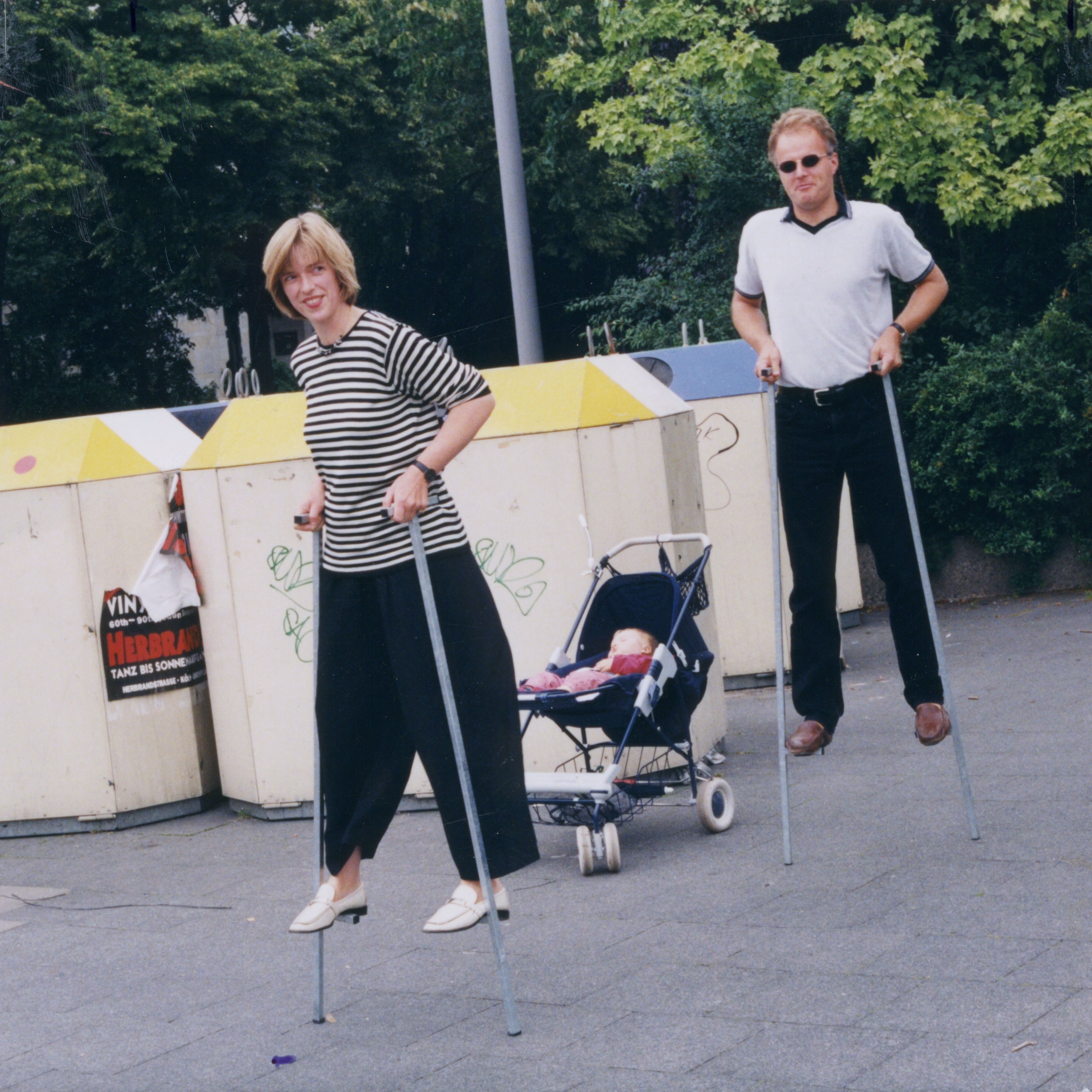
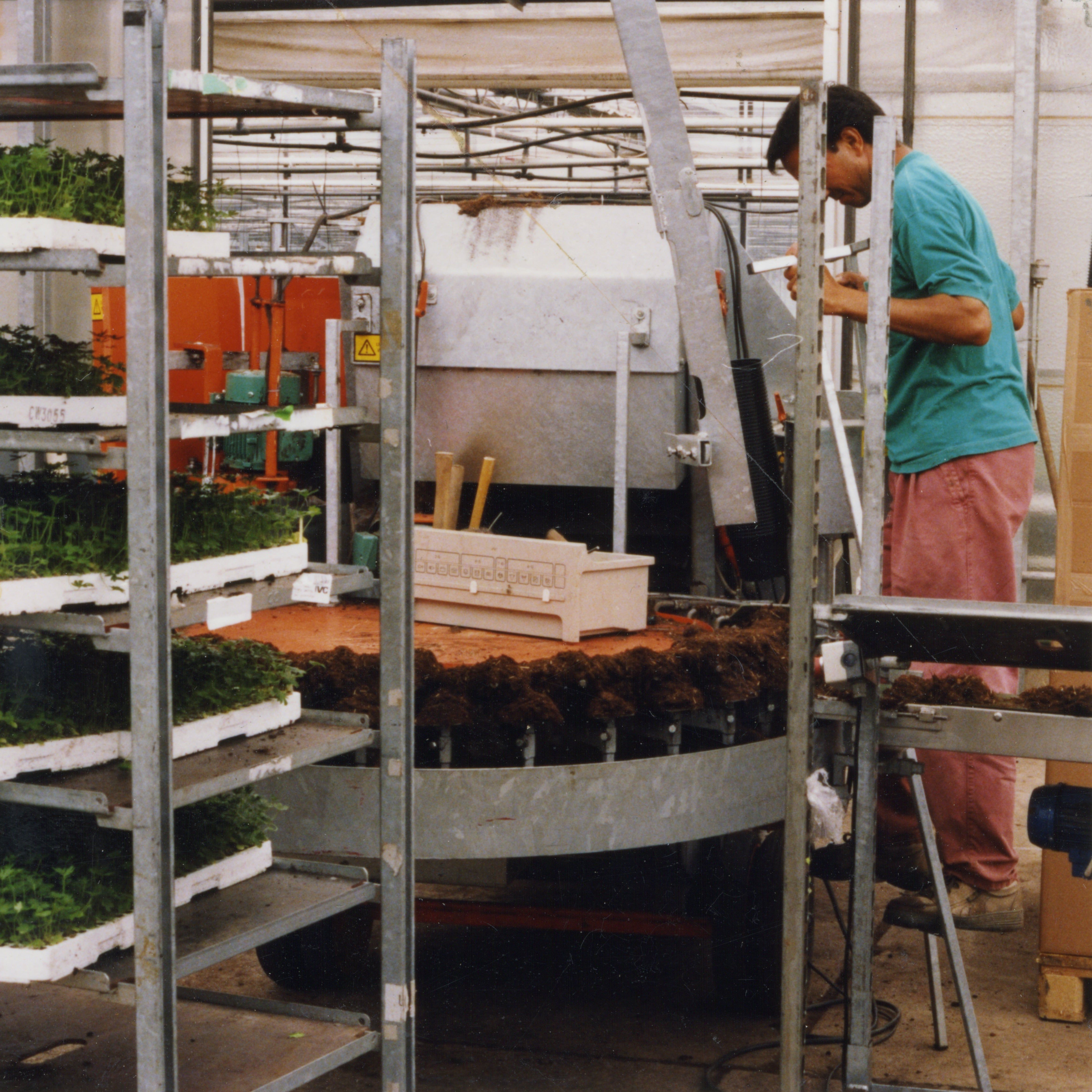
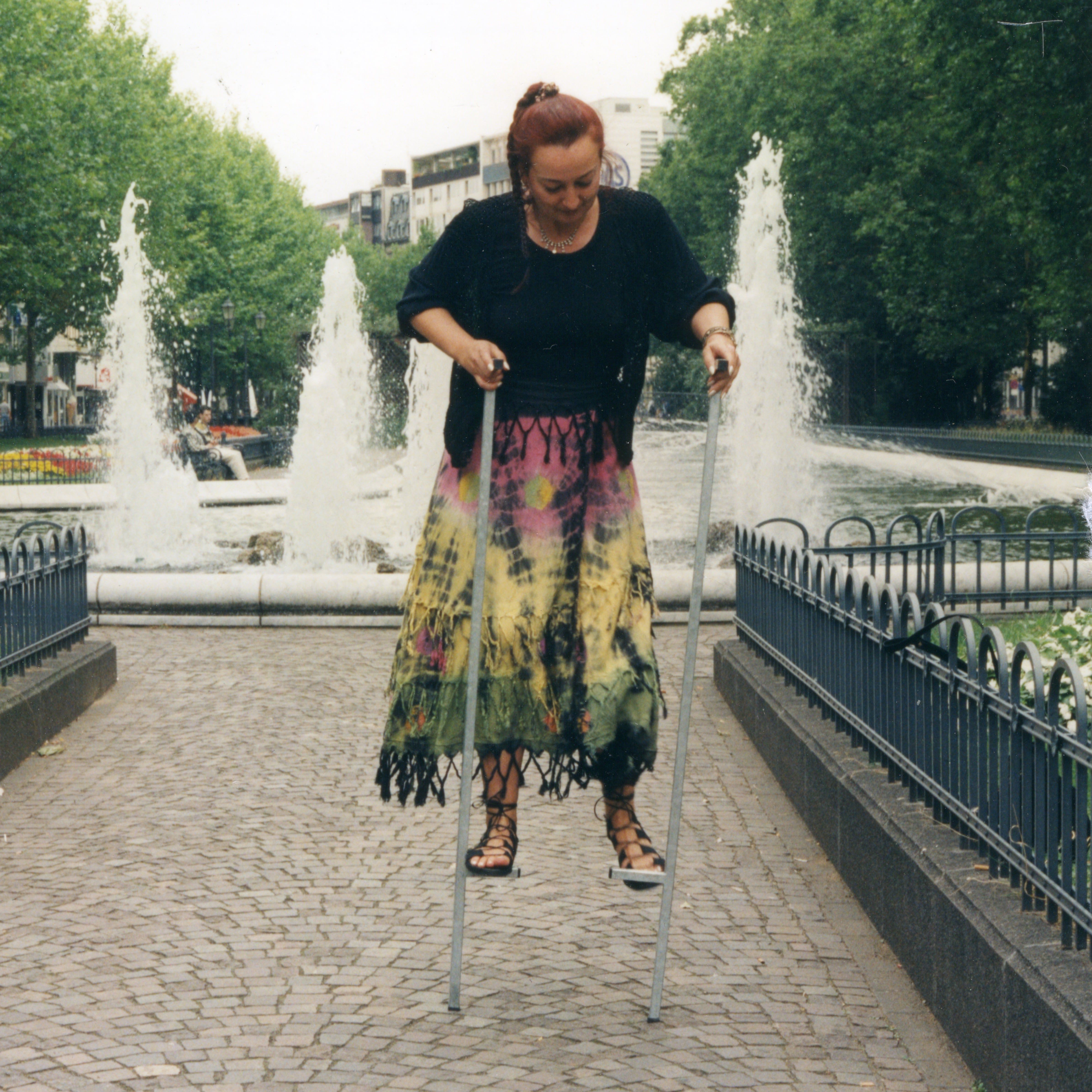
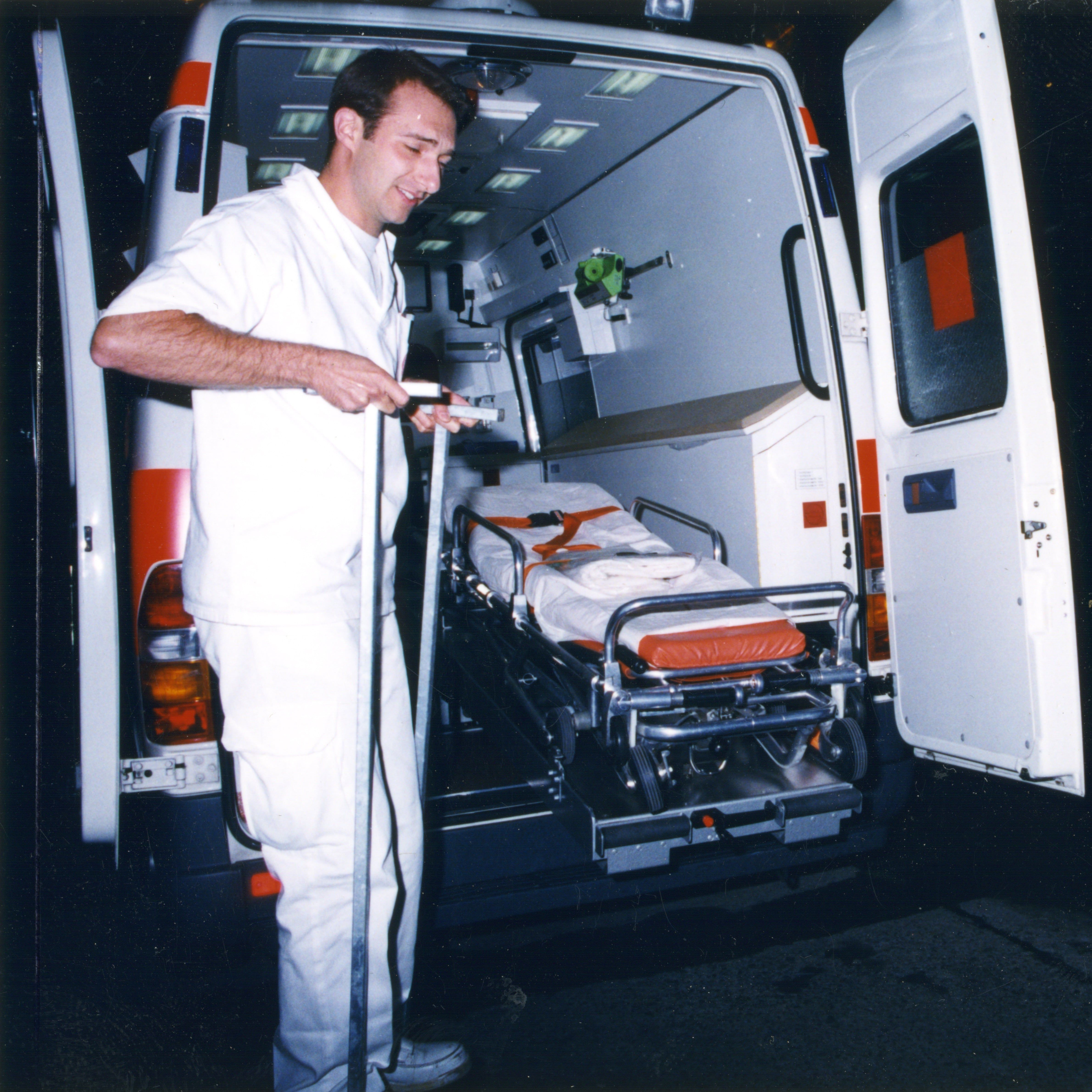
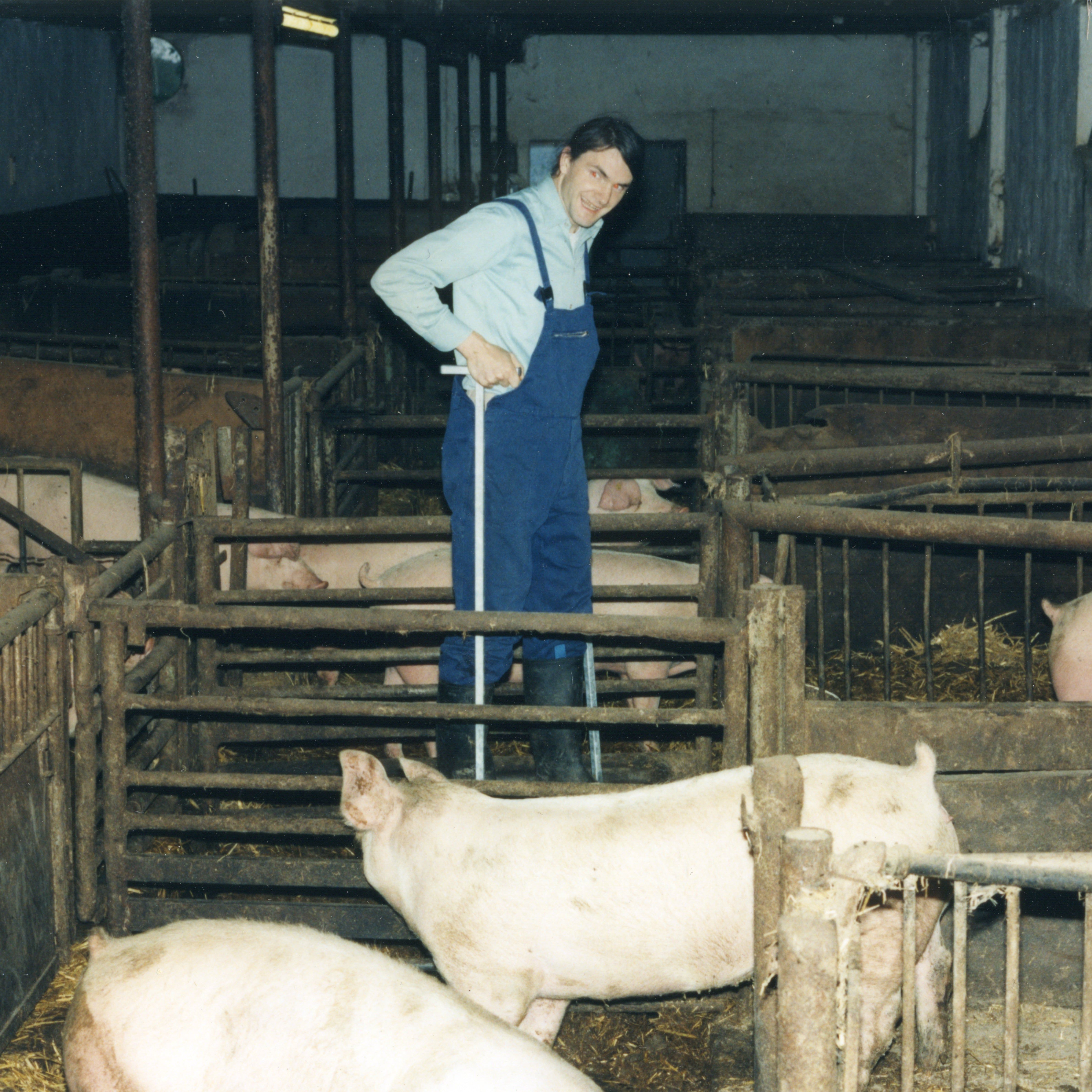

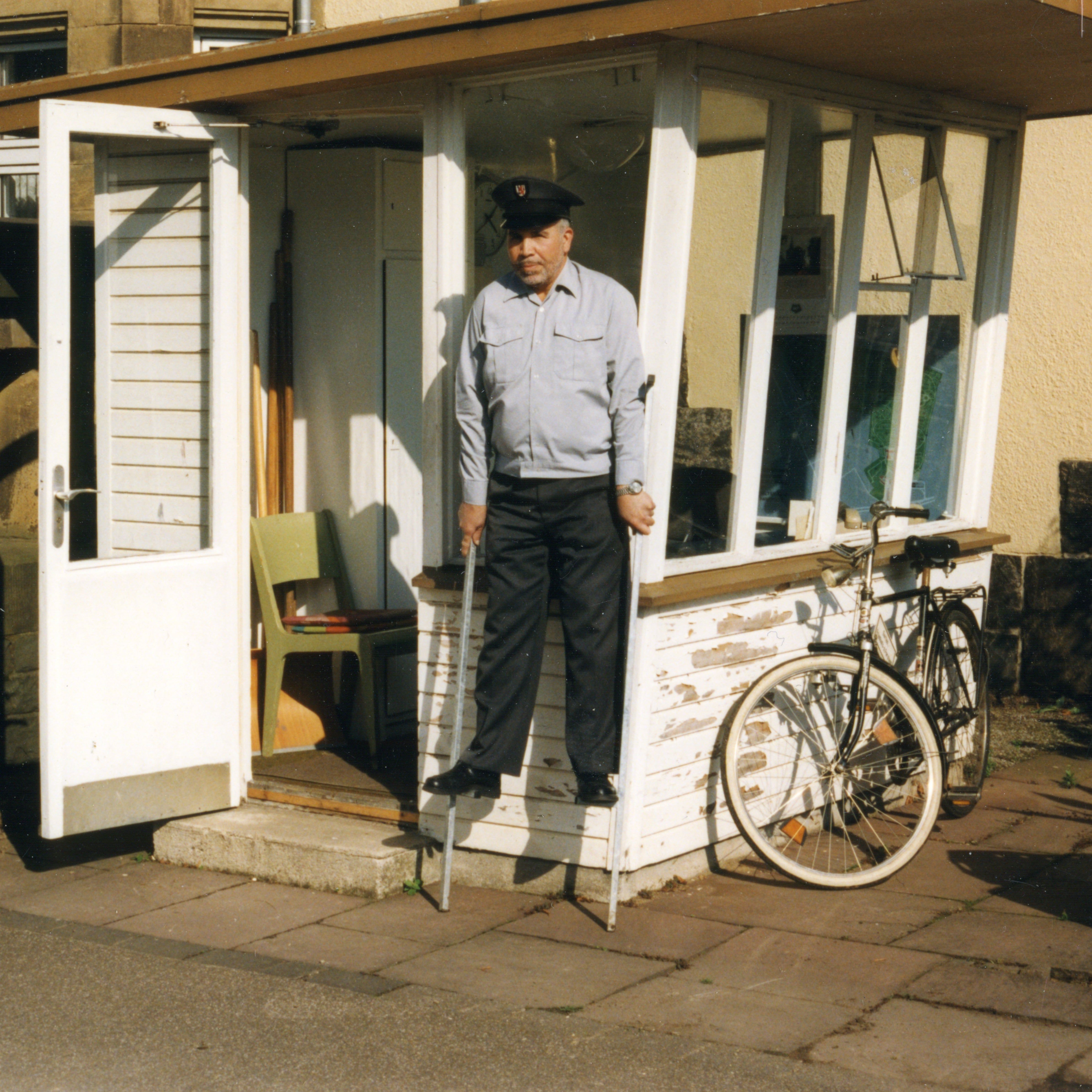
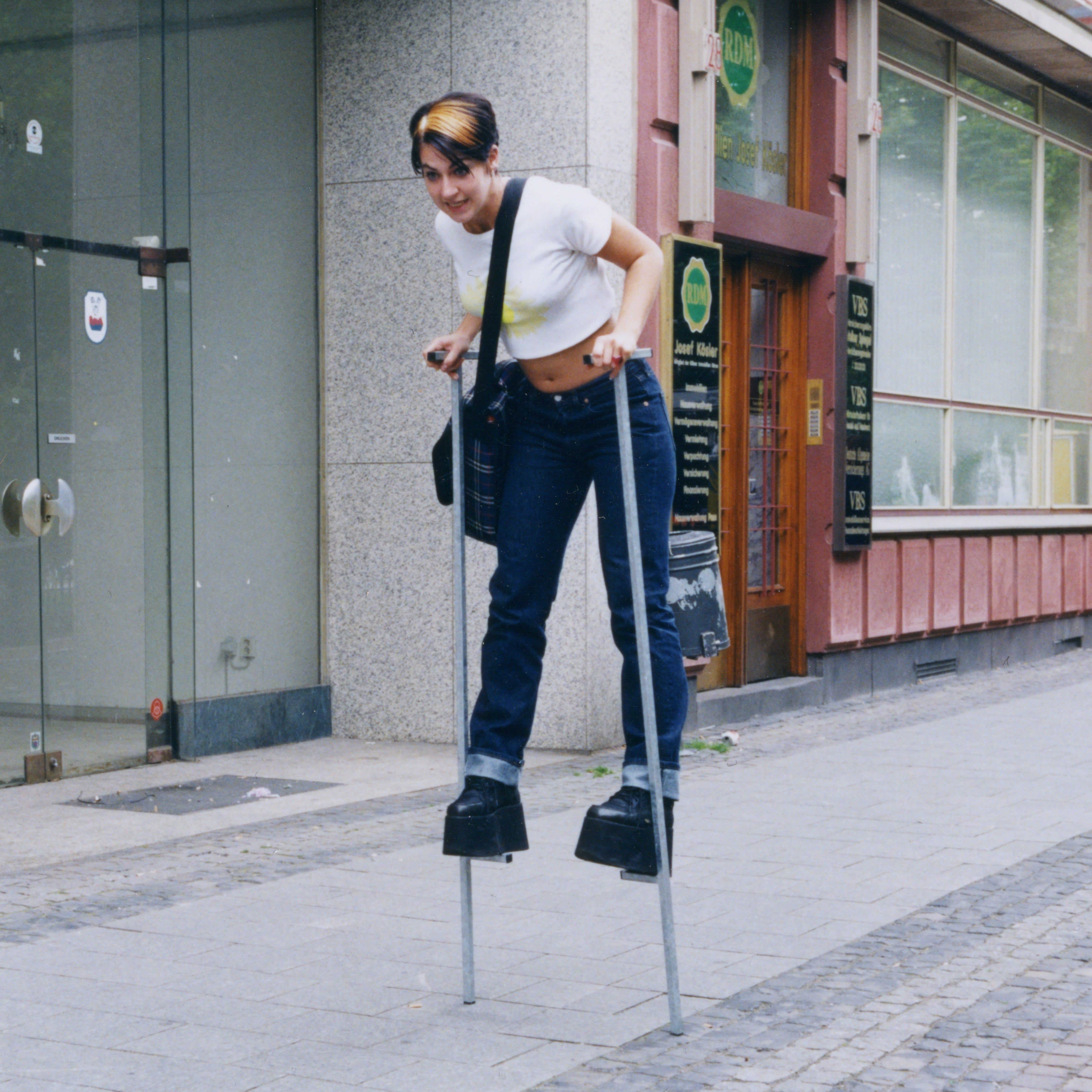
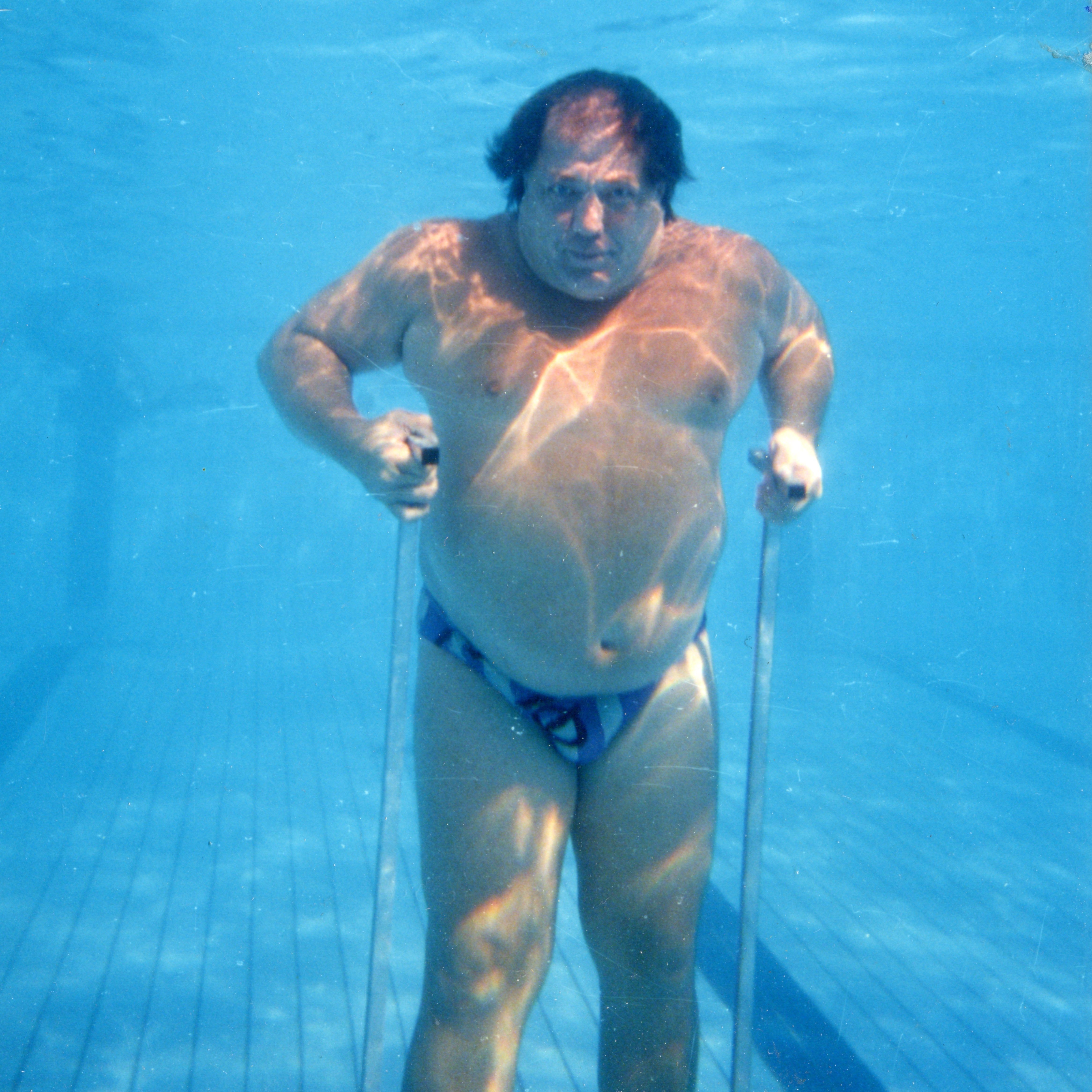
Stilts
Material: galvanised tubular steel, lamellar plugs, monobloc chairs
Well then, let's get on our feet. Unsteady, more concerned with balance than locomotion, man changes his shape and face. The more intense the incline, the more tense it becomes. Exasperation will probably set in after the fifth descent. The stilts are thrown down, picked up again, and lo and behold, it suddenly works.
You walk metres and see the world from ever higher vantage points. The sculpture terrace of the Suermondt Ludwig Museum in Aachen is covered with hundreds of stilts in various sizes, made of welded square tubes and finely galvanised, changing the roofscape of the building and evoking various allusions: To the collections of crutches left behind by healed lame people at the altars of pilgrimage shrines, for example in the church of St Anthony of Padua. Or medieval armouries, where lances and halberds were lined up against the walls. Strangely enough, the childish game of ‘wanting to be bigger’ comes to mind last in the installation. Is this due to the mass of walking aids or their unusual material? One only ever remembers two or three pairs that were quickly put together by a father. There were never more. In addition, plastic chairs on high frames that offered the stilt walkers resting positions.
You could put an army on these stilts. But what would happen then? The campaign would never take place and the opponents would be laughing their heads off. Where is the art? The addition of the banal can create it. The simple objectivity of the material can bring it about. The involvement of the audience can stimulate it. The work functions in passive observation as well as in the active performance of the audience. The relationship to the body and to the most natural movement sequences must be tested anew. Humour remains important, homo ludens. Even in art.
Dr. Ulrich Schneider